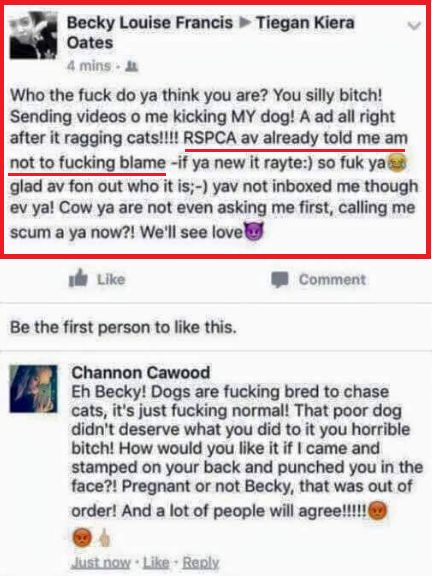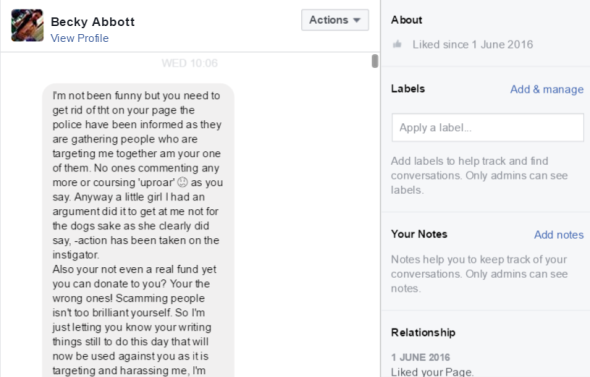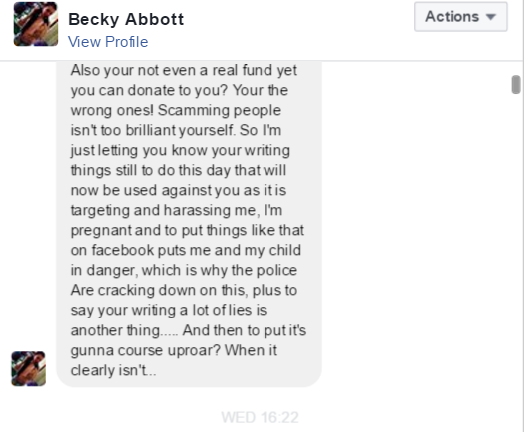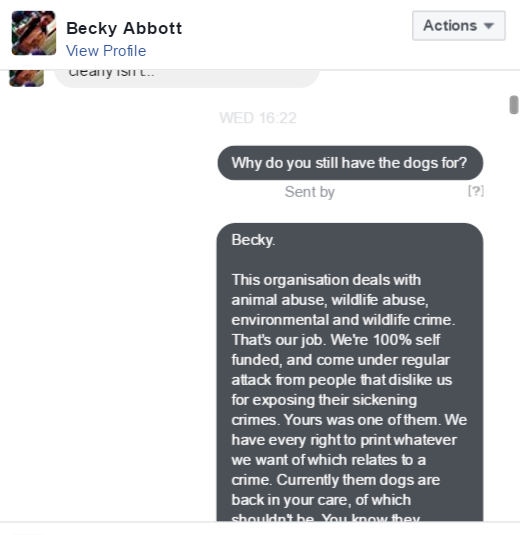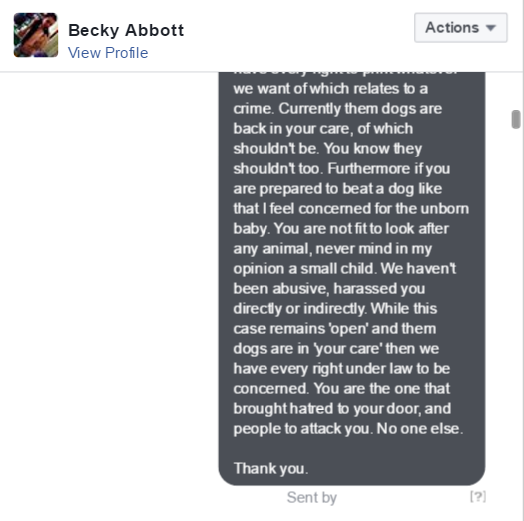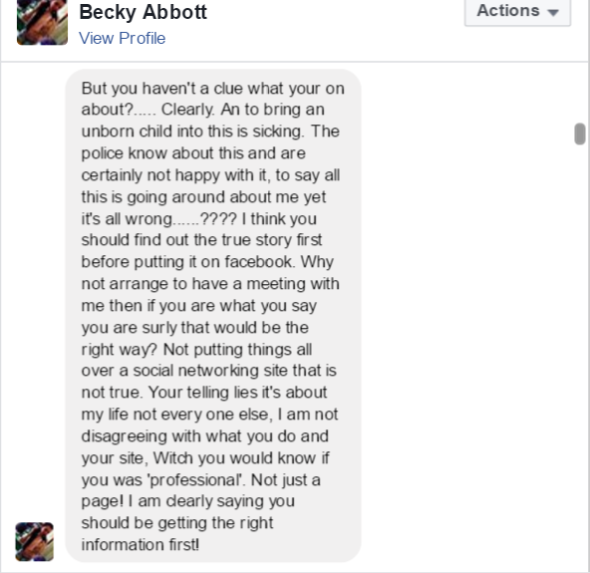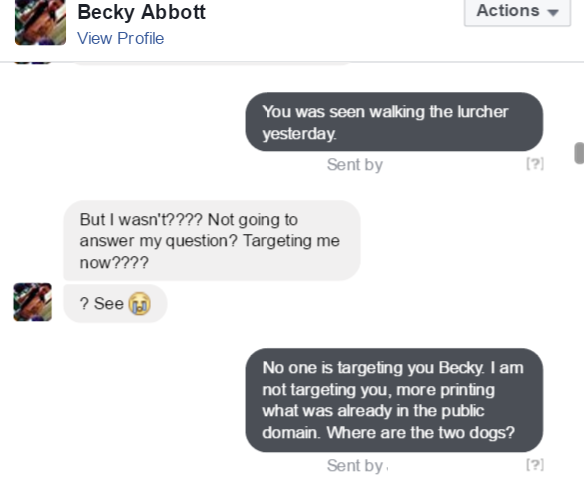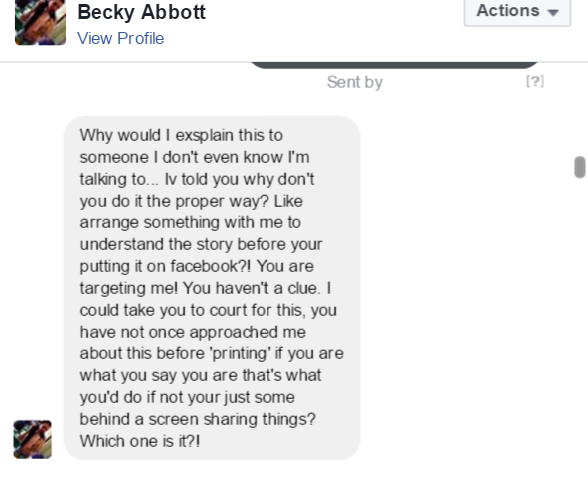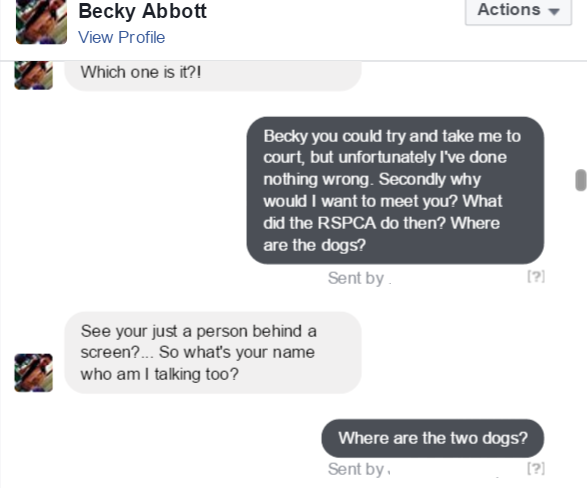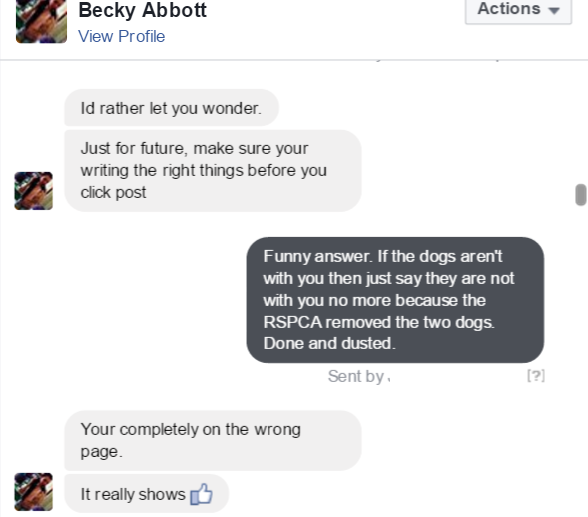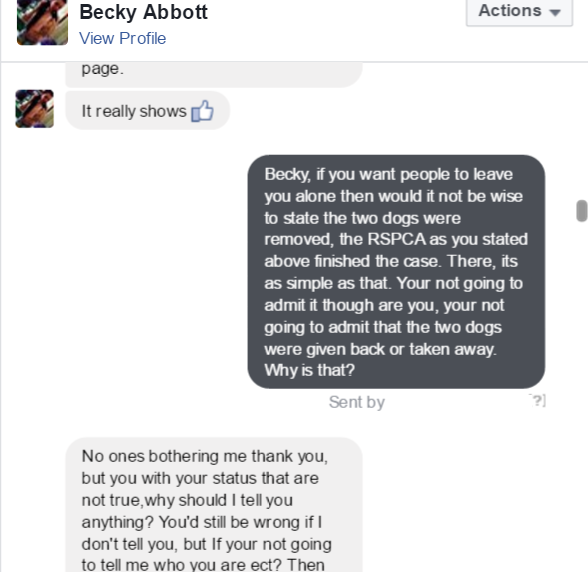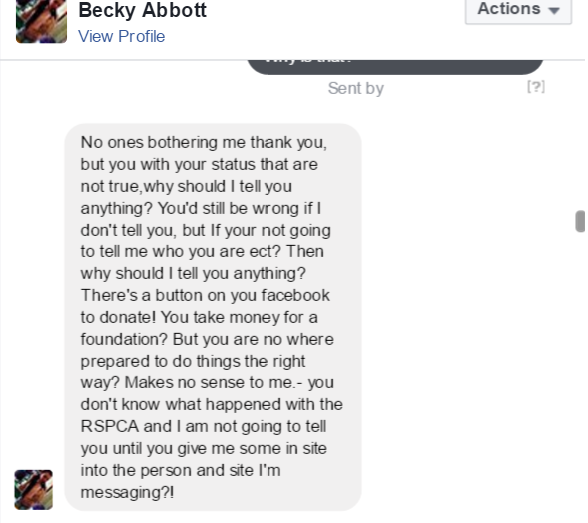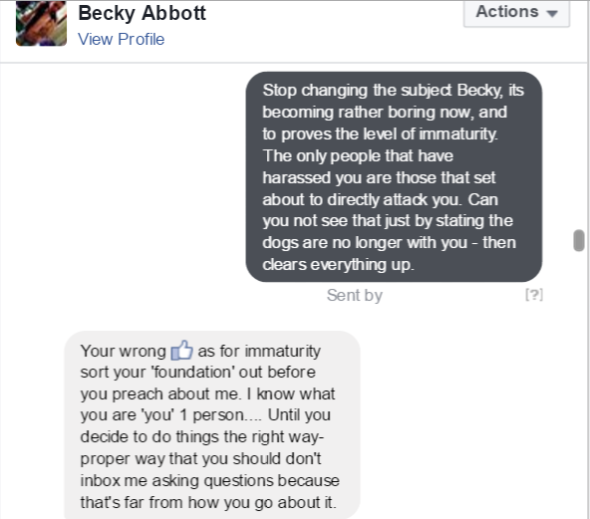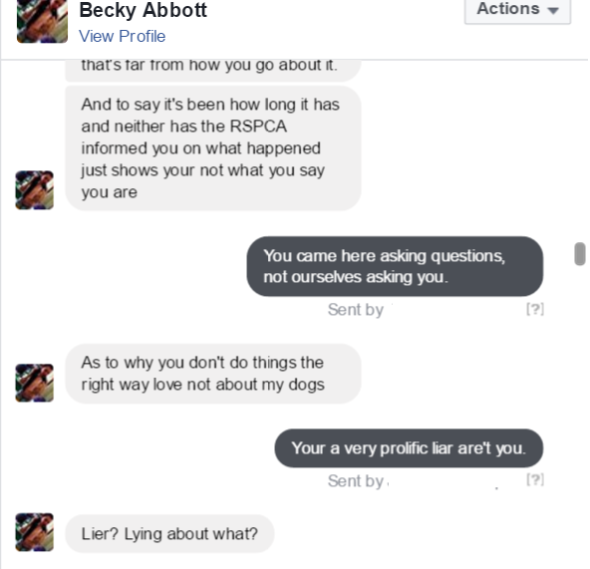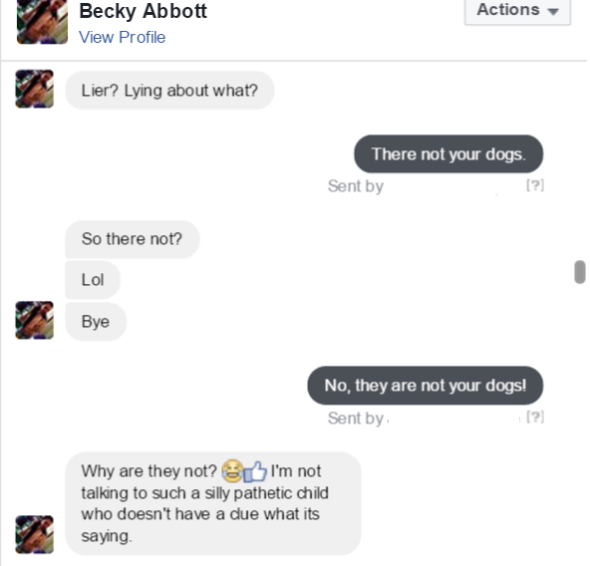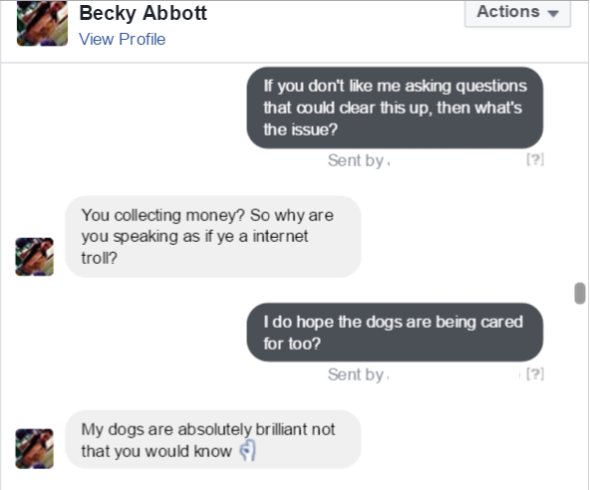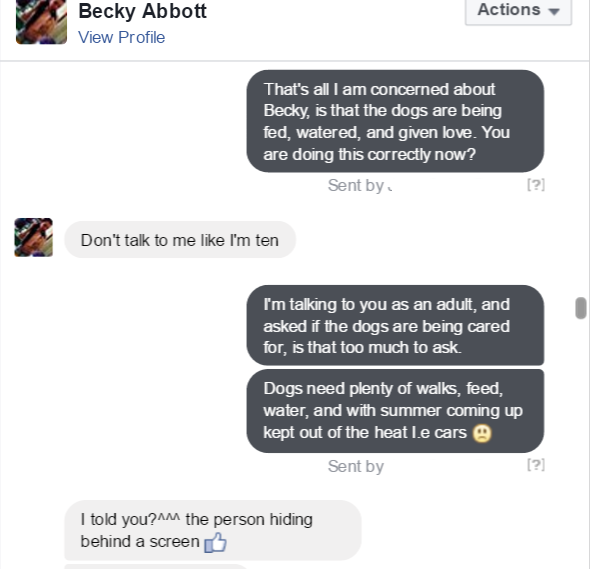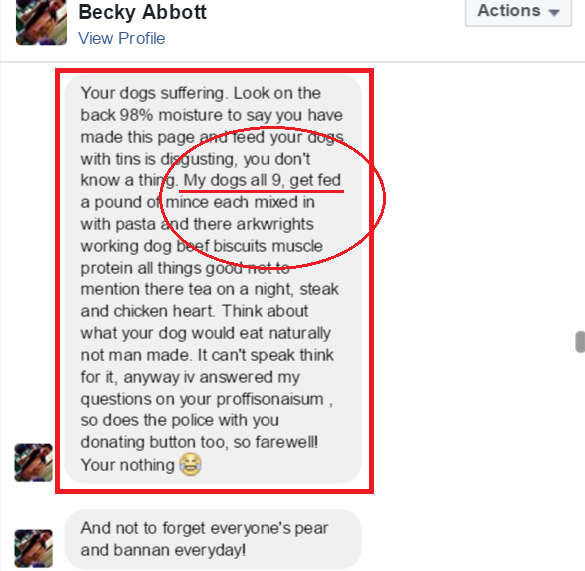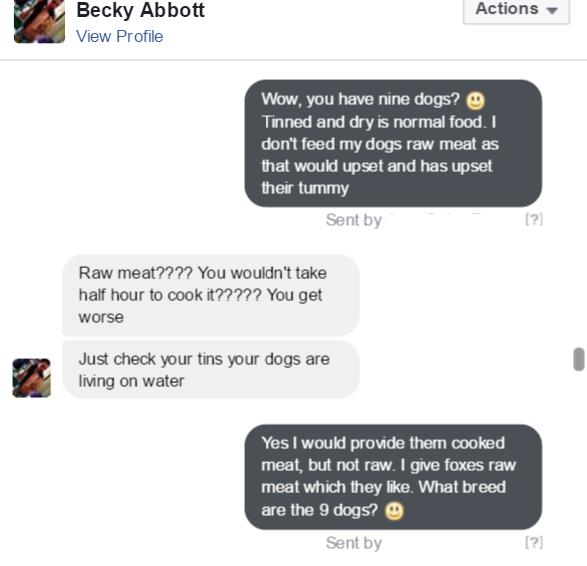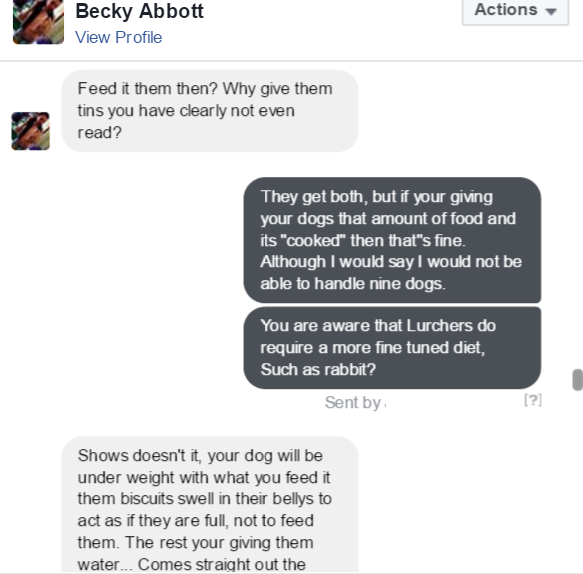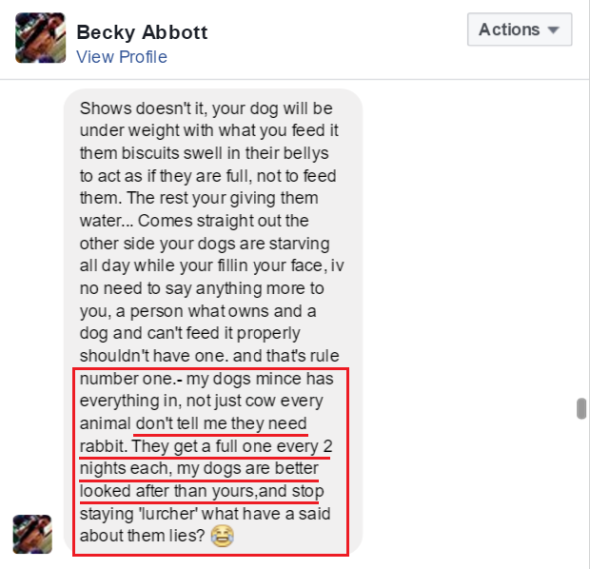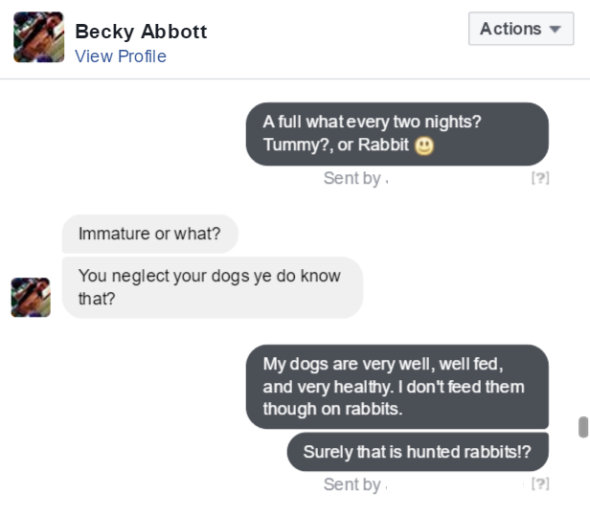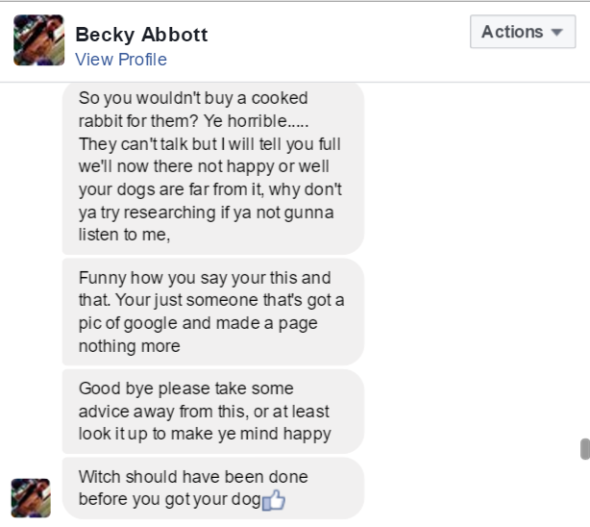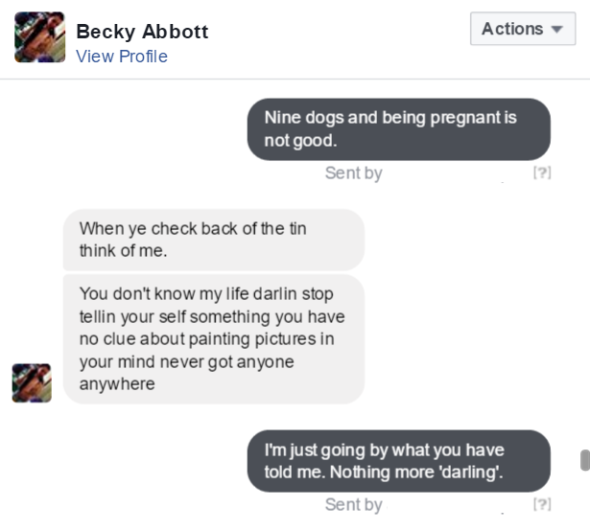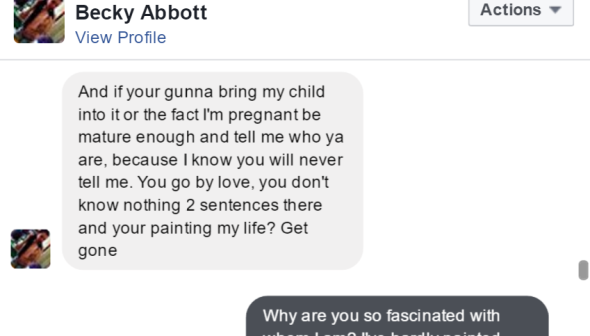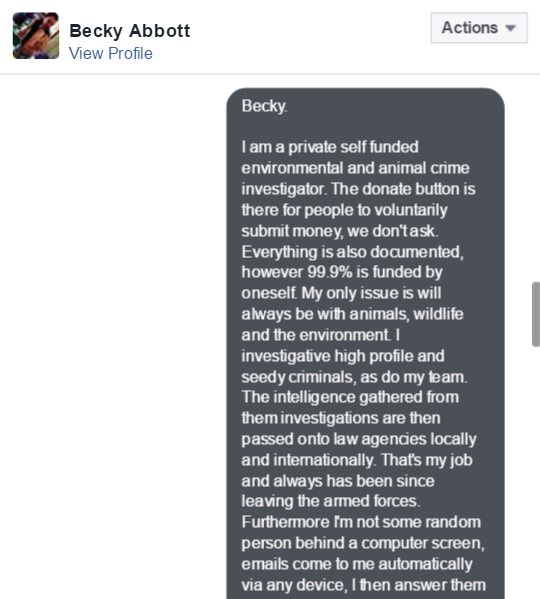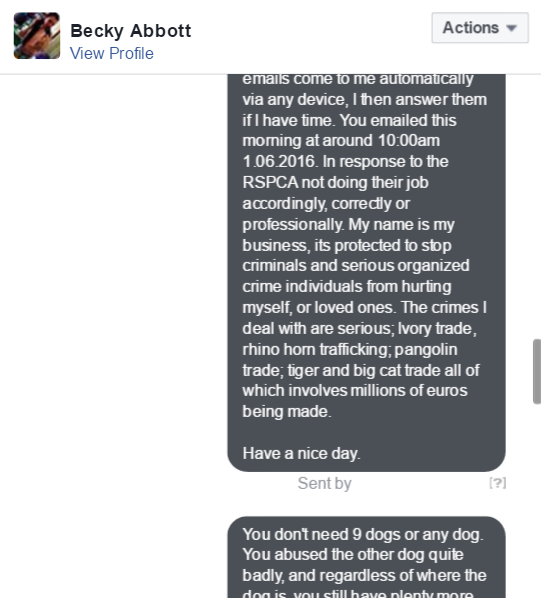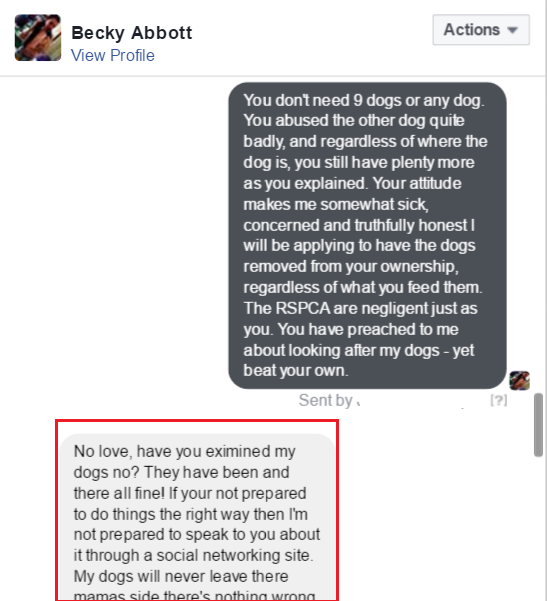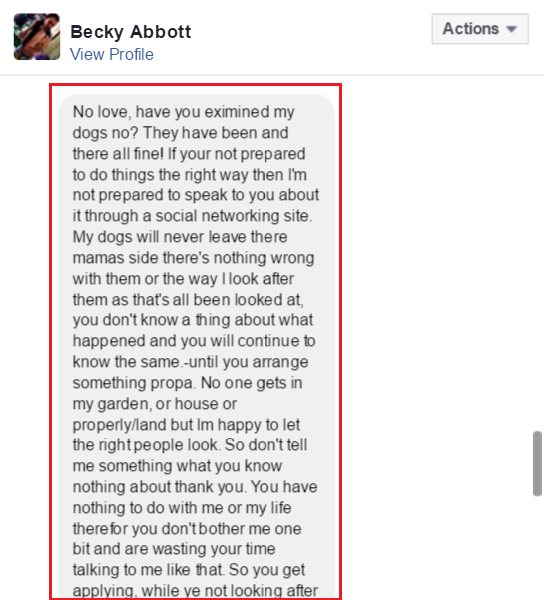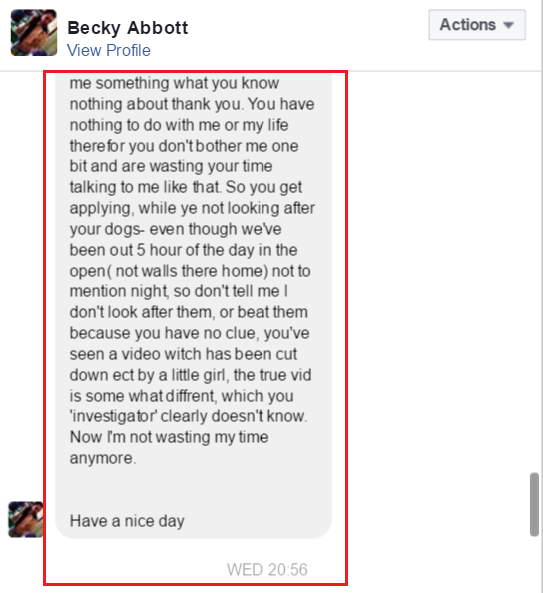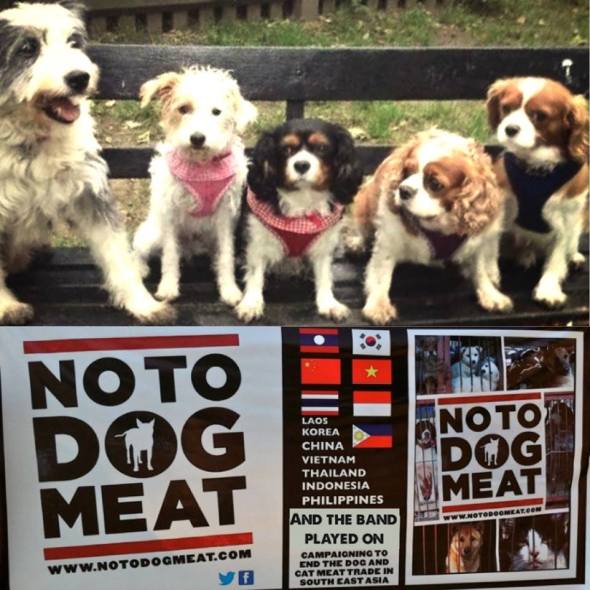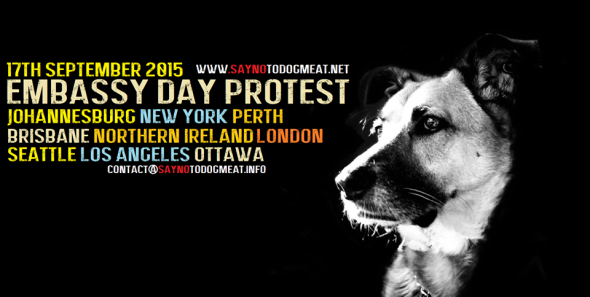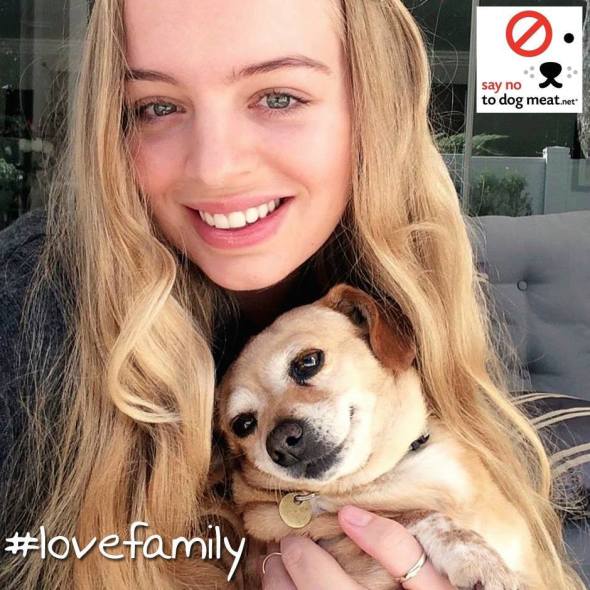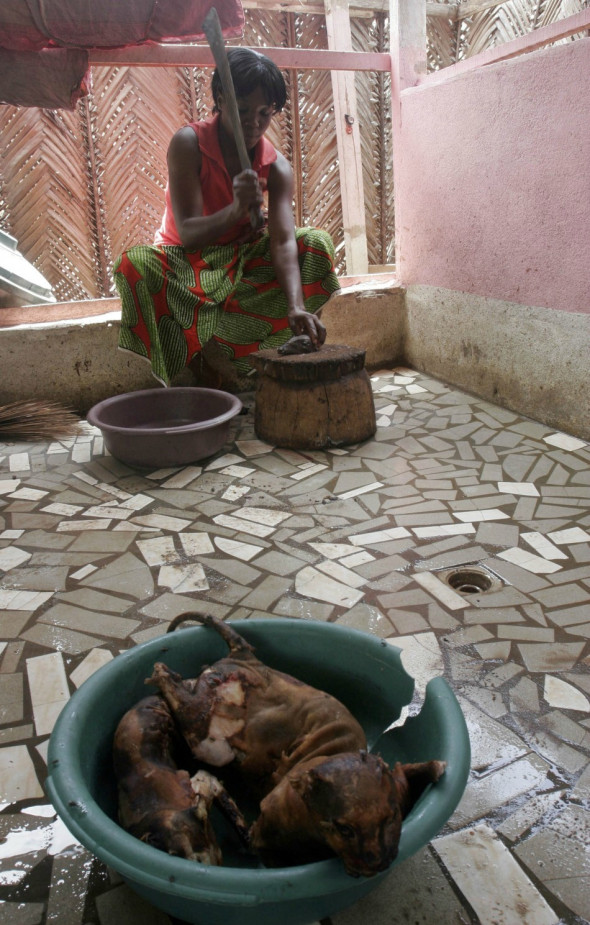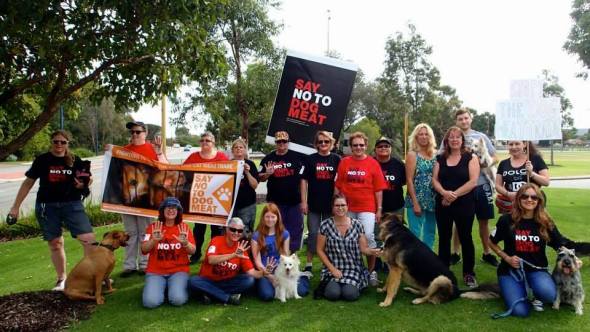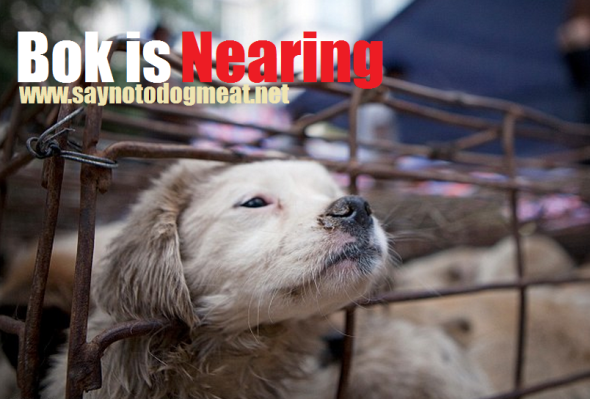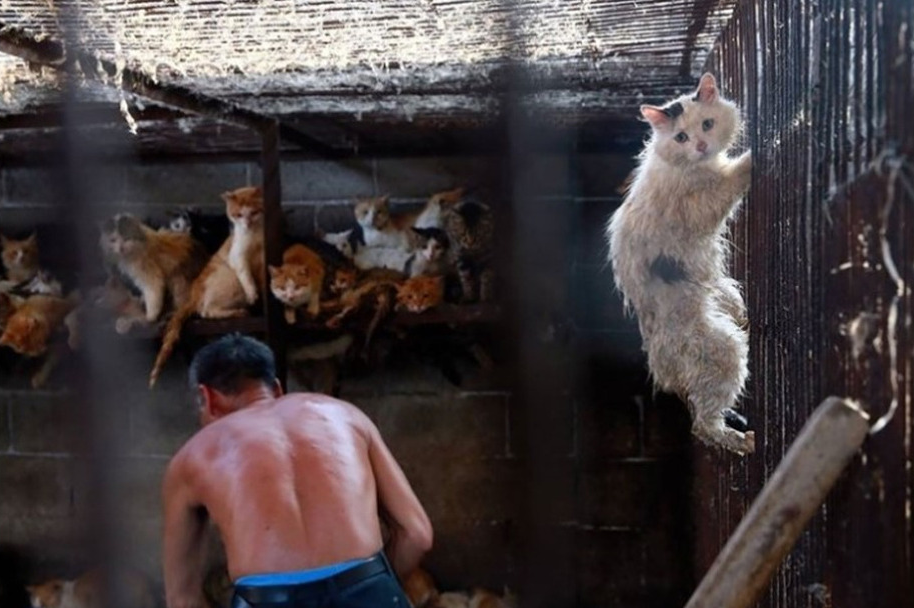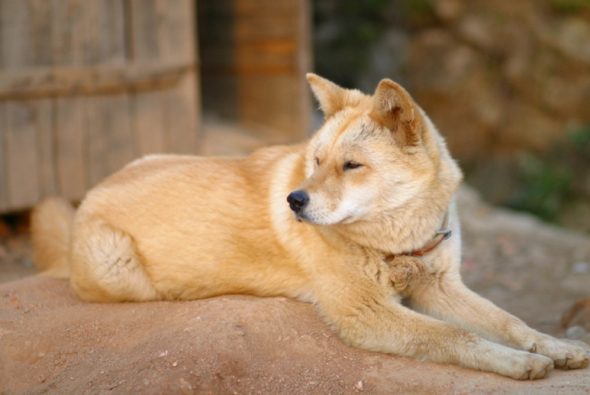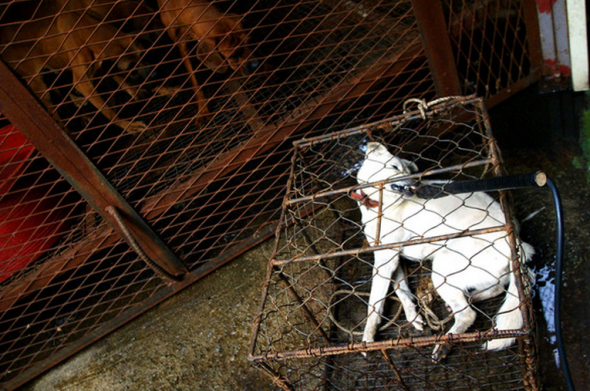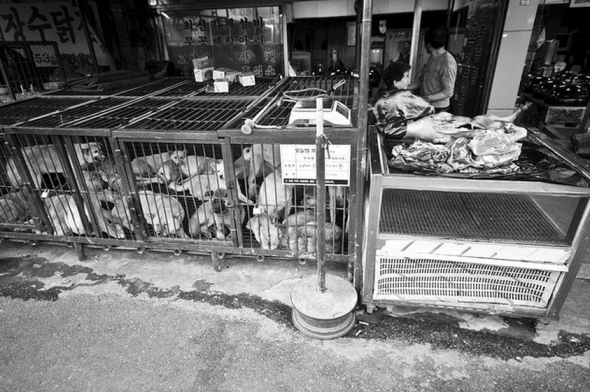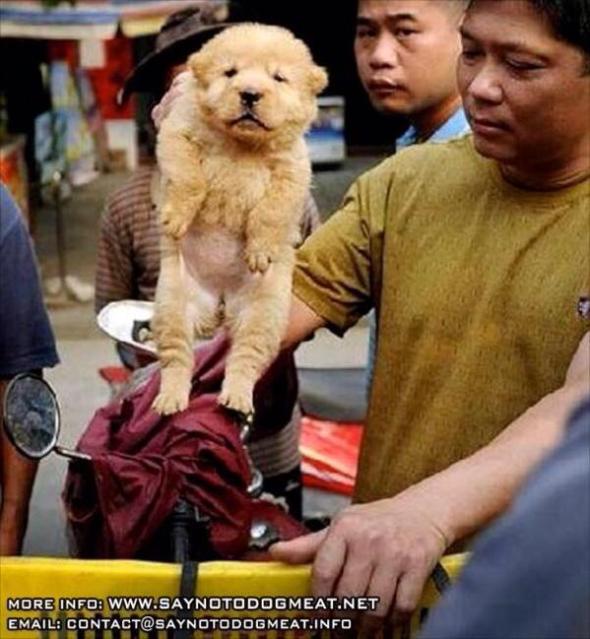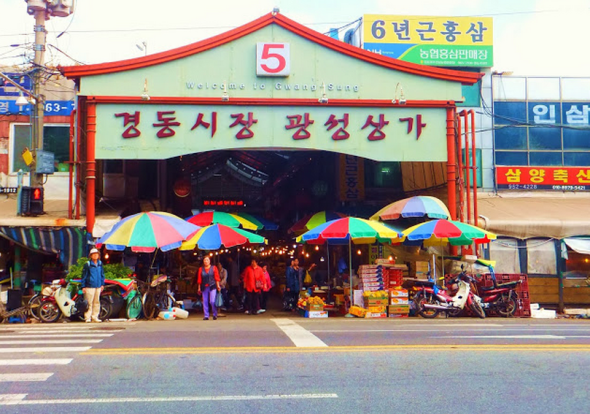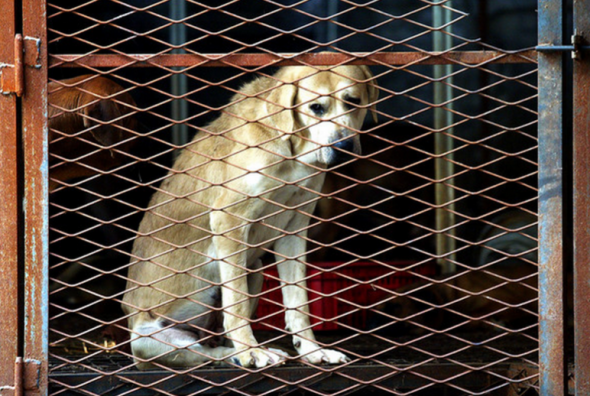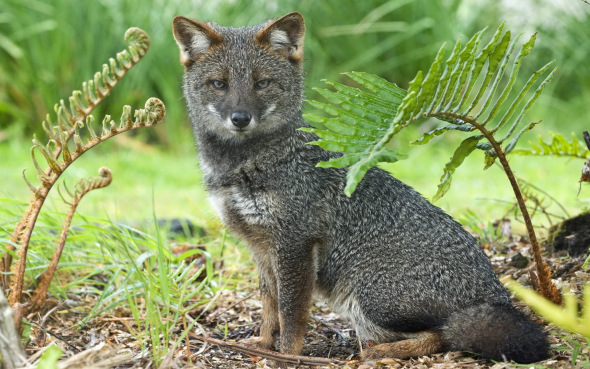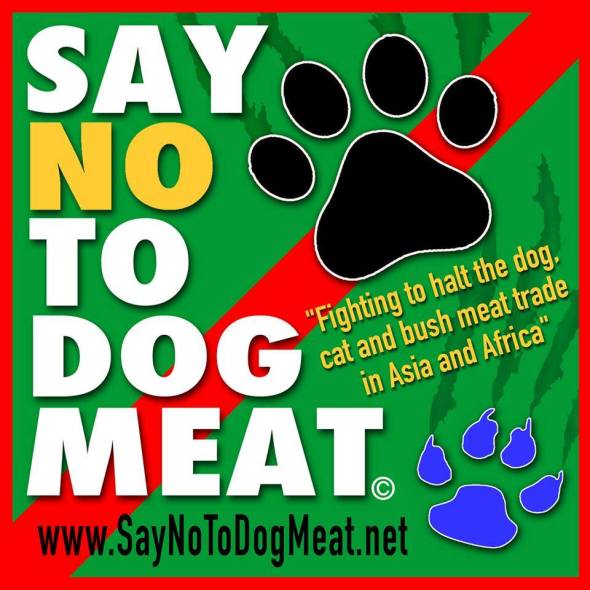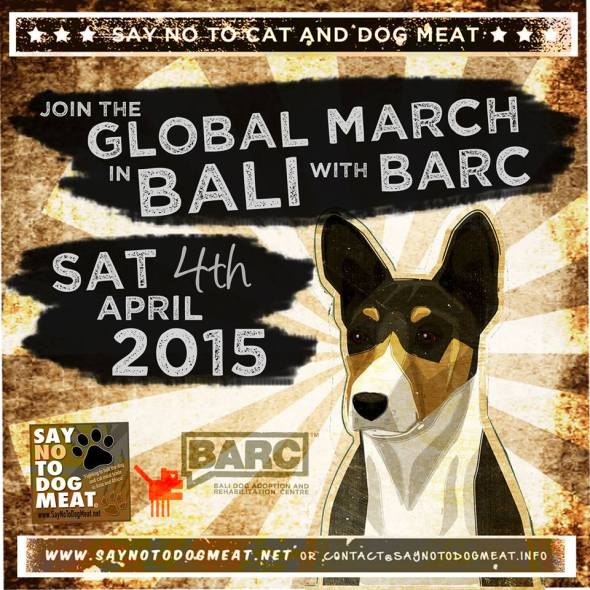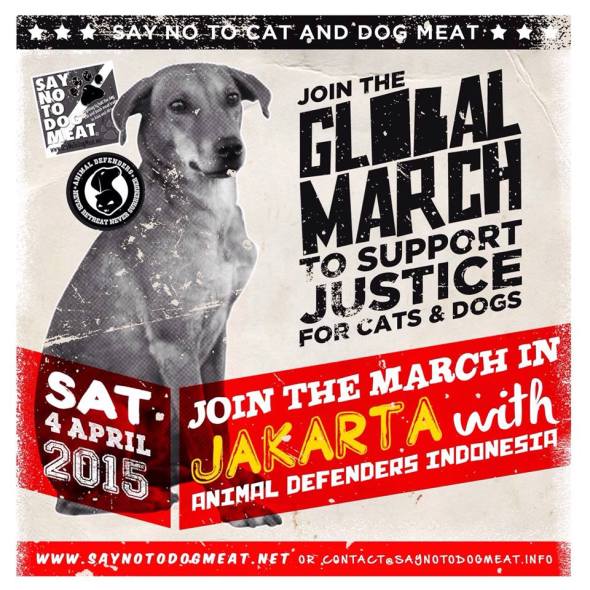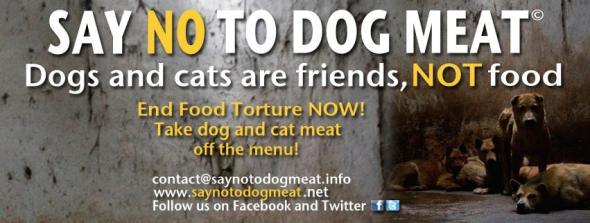MASSACRE IN MOROCCO.
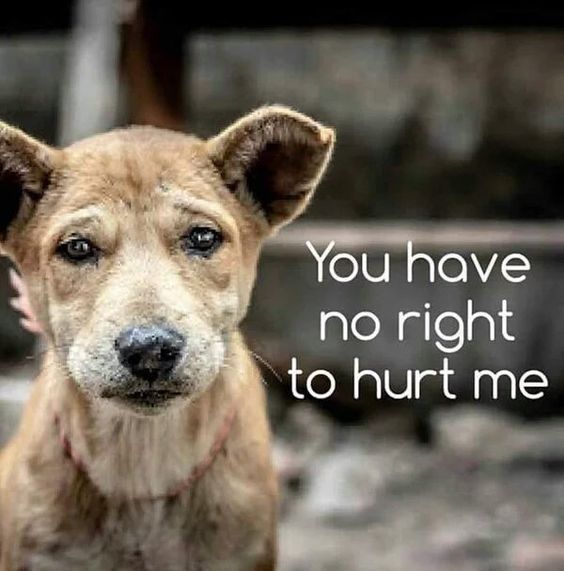
MASSACRE IN MOROCCO
From December 2015 to March 2016 Moroccan governmental officials within the city of Ksar el-Kebir have slaughtered many thousands of stray dogs with single or multiple shots to the head and body using live rounds. Some media and press reports have stated that the slaughter only went on for one day during December 2016, others state two days.
Fortunately International Animal Rescue Foundation Africa hosts a total of eighteen environmental activists within the African country, all of which have confirmed the slaughter has been ongoing from December 2015 and, is still ongoing today September 2016. However for now the cull is mostly over.
The nighttime killings have decreased significantly since the media began publishing on the mass culling of stray dogs and cats, and partially due to many street dogs now wiped clean off the streets of Ksar el-Kebir and within other Moroccan cities such as the Medina quarter - until next year of course.
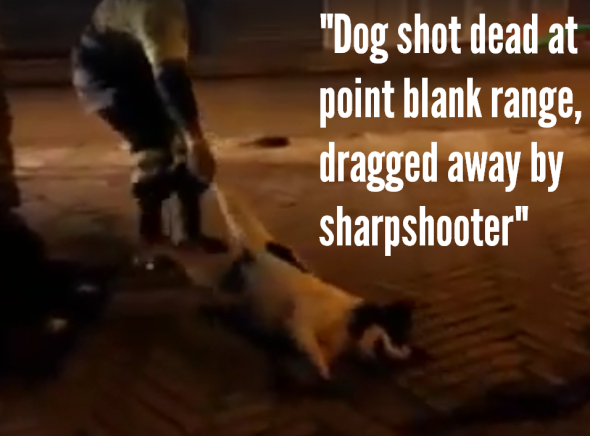
Image: One of many dogs killed by men gunmen.
International Animal Rescue Foundation Africa has learnt that the French Government in Europe are partially supporting the annual culling operation identified as ‘Street Animal Welfare’, although there doesn’t seem to be much in the way of welfare practiced here.
Sources have explained to us that most if not all of the local street dogs were shot using live rounds by inexperienced gunmen on the back of jeeps or 4×4’s. Moreover sources within the Moroccan capital of Rabat stated that poisons had been laid down to kill street dogs and cats too. The deaths were reported as horrific and nowhere near humane!
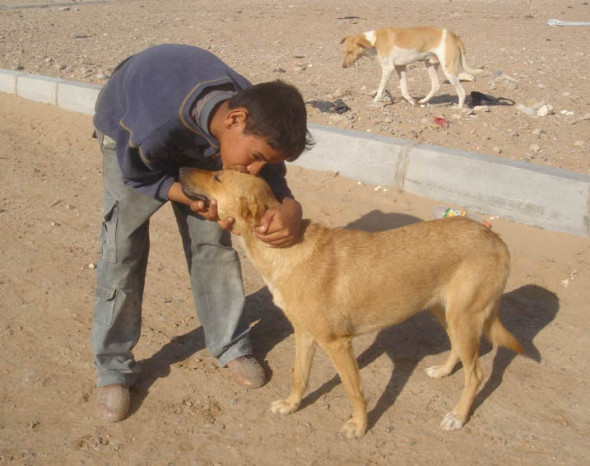
Image: Moroccan teenager showing love and compassion to a stray dog.
From December to date most of the killings have occurred at night which is when the vast majority of street dogs are active. (I.A.R.F.A) learnt that the Moroccan Government ordered the killings due to concerns of ‘rabies’ within the country, and because of an influx of tourists this year too. The Rabat capital ordered dog wardens to pin posters up relating to rabies, as well as hand them out to the locals (as can be seen below).
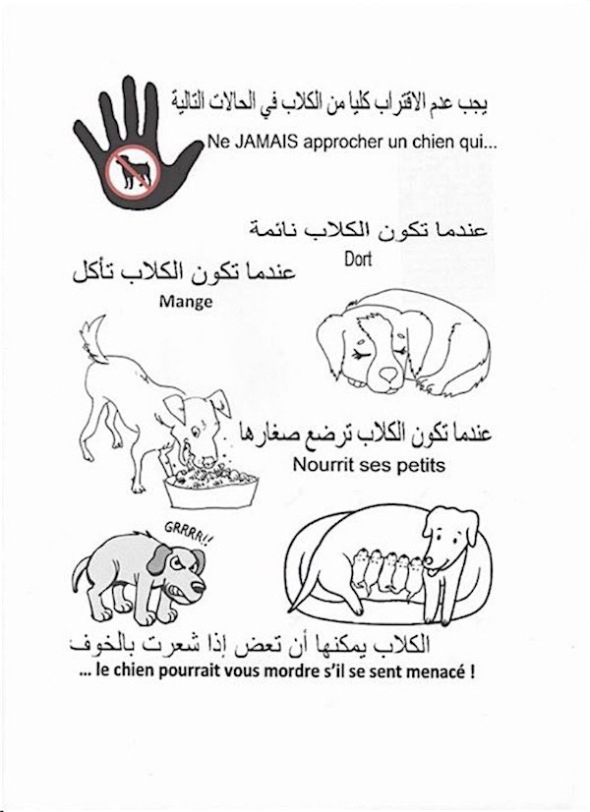
Image: Rabies info in French and Arabic.
The Ksar El Kebir Government ordered this years killings on the 22nd March 2016, although there is much evidence to show the killings began in December 2015. Nonetheless many dogs were slaughtered this year prompting the global population of animal lovers to kick up a wild frenzy, and why should’t they? Morocco isn’t learning here from its mistakes, instead every year they order inexperienced gunmen at nighttime to shoot hundreds of dogs a night (during the dated culling period).
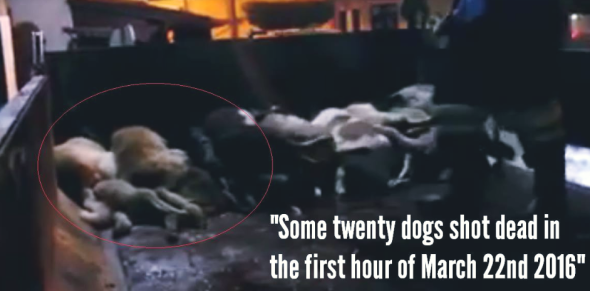
Image: Dead dogs dumped onto the back of a 4×4 in Morocco.
Local authorities, in an ironic attempt to curb the number of starving canines, are sought to kill dogs, adults and puppies alike. These actions are as inhuman as they are expensive for the taxpayers. What’s more, there are numerous studies and expert assessments available from the best international specialists in public health, which demonstrate that this approach is totally inefficient. However despite the best efforts of everyone trying to halt this massacre - the bloody slaughter continued.
Its been estimated that in the Moroccan town of Casablanca, some 15,000+ street dogs are killed every-year. So one would kind of think that instead of killing stray dogs the authorities would at least try to humanly control the increasing stray dog population and, slow any rabies virus from emerging, seemingly not, every year more and more dogs are massacred in the most brutal and barbaric manners you could think of.
Morocco is a predominantly French Muslim/Muslim/Islamic African country of which the Holy Quran states the following in relation to animals that share the same quarters as us, socialize with us, and roam with us (Etc.):
“There is not an animal (that lives) on the Earth, nor a being that flies on its wings, but (forms part of) communities, like you.” (Sura 13 Aya 15).
Furthermore another interesting quote from the Holy Quran is that about ‘mistreatment of animals’. The Holy Quran states the following:
“It is related from Jabir that the Messenger of Allah, once saw a donkey which had been branded on its face and he said, “May Allah curse the one who branded it.” (Muslim)”
While I’m not going to become embroiled within some religious debate, I do find it grossly contradictory that so called ‘Muslims that follow the holy scriptures of the Quran would then violate that holy book or anyone of the alleged recited peaceful verses’?
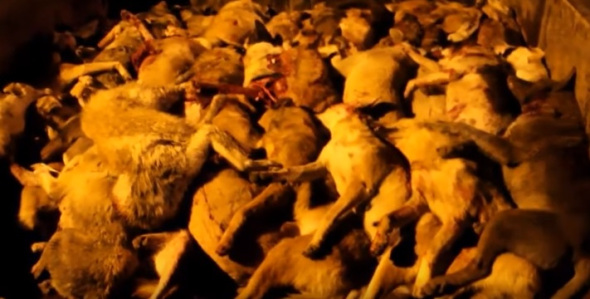
Image: Hundreds of dogs shot dead violating the Quran’s scripture.
The majority of the killings took place in Ksar-el-kebir of which some 110,000 people inhabit. Furthermore about 160km’s away from ksar-el-kebir in Rabut public workers took to the streets killing more dogs.
Further, in Marrakech, local city authorities opted for the poisoning as procedure. Same for Salé, Skhirat Kenitra [Rabat-Salé-Kenitra] and Nador [Oriental Region] says Loubna El Mourabite Kettani, a militant of the animal cause, adding that poisoning can affect even the dogs that have owners, as the poisoned bait is scattered randomly in neighborhoods.
International Animal Rescue Foundation Africa, The World Health Organisation, International Fund for Animal Welfare, and the International Alliance for Rabies Control ‘strictly advises’ local authorities worldwide to sterilize and vaccinate dogs in order to reduce their population and combat rabies. However as you can see every year throughout various Moroccan cites and towns the local authorities opt for killing dogs at point blank range, with live rounds or just poison baits, however things may be on the turn (please keep reading).
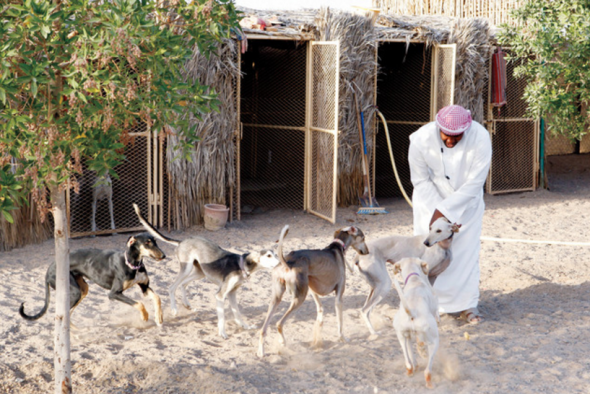
Image: Muslim’s do love dogs, sadly ‘a minority don’t’.
Zineb Bouchikhi, ONSSA’s communications officer, said that: “stray dogs that do not have owners, given the danger they pose to public health, are eliminated by local authorities as part of the national strategy against rabies. Dogs which have owners, in turn, are vaccinated annually by ONSSA officers in rural and peri-urban areas. In urban areas, private veterinarians are in charge of this operation.”
In the period from 2010 to 2015, an average of 90 000 owned dogs were vaccinated by the veterinary services of ONSSA in different regions of Morocco. However, there are no statistics on stray dogs slaughtered by local authorities each year. (How coincidental is that?).
International Animal Rescue Foundation Africa, local and international charitable organisations believe in capture, vaccinate, sterilize, de-worm and relax in the area of origin, is the best scientific, ethical and sustainable approach to preserve human and animal health. Shooting dogs though is not controlling the problem which is clear to see due to annual shootings every year.
Furthermore the cost of shooting dogs will heavily outweigh the cost of vaccination. Concerning-ly due to the press and media picking up on these mass and brutally horrific culls it will only bring a bad name to Morocco thus reducing tourism, finance, increasing poverty, unemployment and crime.
Trap: (Trap, neuter and release) is practiced in India, Turkey, America and Canada and has enabled eradication of rabies in a few years. In Morocco, including Essaouira and Taghazout, similar experiments were carried out. These are examples to generalize nationally. So if (TNR) works why are the local authorities still shooting dogs dead at some 15,000-25,000 a year annually?
Half of the domestic dogs and strays stay in residential areas, close to the forest or the sea. Meanwhile they rule the streets in the night finding food near the garbage containers or outside houses in the suburbs. In the early morning they leave to find a more calm place to sleep, usually in the forest. Strays mostly shy away from humans who use to throw stones at them as a protection.
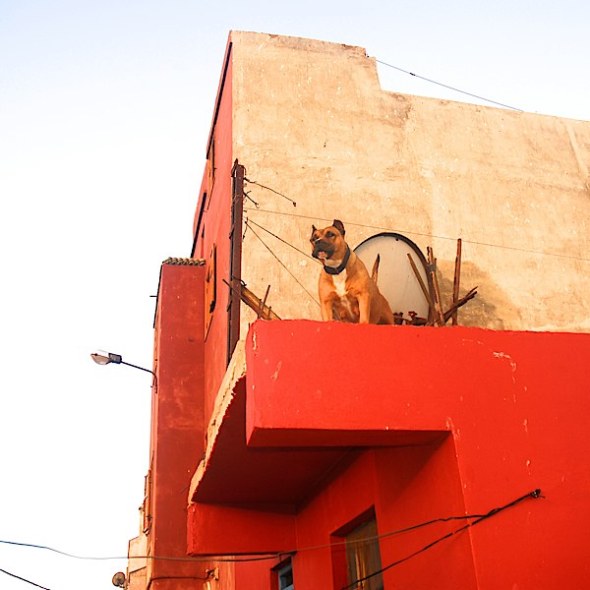
Image: A watch dog in Sekkala.
Concluding I can state now: An initiative has been launched as of [Wed 30 Mar 2016] in Rabat jointly by RAPAD and Adan association in collaboration with municipal councilors of Rabat for the creation of a pilot project for the benefit of canine and feline stray populations. The associations of the capital [Rabat] aspire to make it a successful alternative experience to convince both the state government departments and elected officials to abandon slaughter.
For now though I’ll leave you with this video as a shocking reminder to the ongoing crisis in the African country of Morocco. We (the organisation) hope to never see such a sickening image of barbaric brutality again.
Dr Jose Carlos Depre
Chief Executive Officer | Director
Formal Public Apology addressed to: World Protection for Dogs and Cats in the Meat Trade Charity.
International Animal Rescue Foundation
Formal Public Apology addressed to: World Protection for Dogs and Cats in the Meat Trade Charity Registration No: 1154524.
Addressed to: (WPDCMT UK)
MR DAVID MERRILL
MME JULIA DE CADENET
MR Robert DONKER’S
http://www.notodogmeat.com/
Addressed to: (WPDCMT USA)
MME FIA PERERA
MME LORI ALLEN
http://www.notodogmeat.com/usateam.php
Dear Mme Julia de Cadenet (CEO).
March (2013) our organisations investigations department the [E.A.D] and (CEO) Dr Depre was alerted to ‘allegations of possible fraud, deception, and misconduct relating to the misuse of public donations’. Once alerted we then conducted a tedious, and at times, quite frustrating investigation, within the public domain, and behind the scenes. From (2013-2016) we (the organisation) was provided with countless reams of data, emails dating back from 2013-2014, and alleged misconduct, (relating to deception and fraud).
From 2013-2016 the organisation then set about to investigate these alleged claims. At no point from 2013-2016 did we or third parties locate a single scrap of evidence that backed these claims up. The reasons for our own independent investigation was due to the gargantuan public backlash of which was bringing other (unrelated organisations into disrepute directly and indirectly). The public backlash has derived from what we can only locate 6-9 individuals online that are related directly or indirectly. Most of the names involved have been withheld.
The following data listed below has proven to be false from 2013-2016, which we (the organisation) apologize profusely, because at times we were led to believe that fraud, and deception was ongoing, regarding the communications that were posted online. These communications in the way of (screenshots and copied and pasted emails), pushed us briefly out of conservationism investigations, and into civil actions, which we believed at the best of times, that these allegations were indeed factual. A meeting that was held in relation to the work that we conduct annually bought up the alleged allegations and how we could either prove them to be true or false via ‘professional investigatory work’. From this point, allegations; he said this; she said that; (Etc) were then pushed aside. A meeting was then arranged with the Charity Commission (2015 September), and the Institute of Fundraising, with a further meeting (2016 and communications via telephone)..
1… When founded the charity allegedly illegally harvested donations from street pots without a license. (This allegation has been proven to be false, and the council involved have confirmed that a licence was indeed sent to the fundraiser).
2. Refunds were not awarded to a handful of individuals that purchased clothing from the charity website. (Emails from 2013-2014 have proven this to be false, receipts and PayPal data has also proven these allegations to be false).
3. 2014-2015 charity 1154524 ‘allegedly stole donations via a Total Giving platform donation link’. The allegations stated that charity 1154524, hadn’t given all incoming donations on a restricted UK fundraiser to the Philippines ‘non-registered charity Dogs Mountain’. Total Giving was in fact to blame here, for not closing down the fundraiser which they have confirmed. The reason why charity 1154524 were not made aware of incoming money was because PayPal does not state where that income is coming from. PayPal only confirms that an ‘amount has been delivered in the PayPal account, and who from, but doesn’t confirm which ‘titled platform’. Allegation is false.
4. The British charity allegedly didn’t provide all funding raised to the Romanian charity identified as: Adapostul de caini din Baia Mare. PayPal data has proven this allegation to be false. The charity provided the relevant funding, however ‘didn’t continue with their promises of providing blankets, food, cover Etc or a visit’. Charity 1154524 couldn’t keep their promise back in (2014) because other shelters were in need too. Furthermore the charity had exceeded their (2014) expenditure totaling £9,066. Charity 1154524 did not commit an illegal activity. See link here: http://forms.charitycommission.gov.uk/find-charities/
5. 2013 an image of actor Peter Egan was posted onto the main charities webpage and Facebook page. This allegation is factual. However the ‘allegations that stated the image was posted to harvest donations was false’. Mr Egan demanded a ‘trial by Twitter of which the charity refused to answer questions. This allegation is factual. However Mr Egan was asked to phone and/or email - which Mr Egan refused to do. Mr Egan an no point explained why he was at the charities demonstration, nor did he understand that the photos belonging to the charity could be posted. Traces online do actually show Mr Egan’s images being used to raise funds - see link hereto: http://www.ourdisappearingplanet.com/ the link is also advertised on Mr Egans site hereto http://www.peter-egan.co.uk/page_2157999.html
6. An allegation was made that Mme Brown, the then director of charity 1154524 hadn’t visited South Korea. The visit was confirmed. Donations raised for this visit were all legitimate. Skype records prove Mme Brown did visit, and the allegations that Mme Brown didn’t visit are in fact false
Points 1-6 have been extensively investigated and verified by all parties, councils, the charity, registered charities, non-registered charities, and individuals. Furthermore we have proof to back these claims up. Proof of where the communications derived from, telephone records, emails and communications from the Total Giving and PayPal platform.
From 2015-2016 we was then sent allegations that charity 1154524 stole donations totaling $80,000 GBP that was raised for the individual identified as Mrs Yang Xiaoyun, of China, Tianjin. The following data below is factual.
1. June 2015 Ms Ling opened and created a Total Giving fundraiser for Mrs Yang Xiaoyun. Ms Ling placed into that platform Mrs Yang Xiaoyun’s images, with brief description of ongoing problems. Data confirms that Ms Ling implemented the images into that platform. (fact).
2. August 2015 charity 1154524 then began receiving large amounts of donations of which was primarily due to various (unidentified individuals) sharing the platform link, during the June, Chinese YuLin festival. (fact).
3. After contacting trustees it has emerged that the charity was only going on Ms Lings say so, her own concerns, and why she believed setting the fundraiser up was necessary. (fact).
4. Ms Ling then retired from the charity at some time during October 2015 after ‘alleged re-naming of the fundraiser. Communications broke down between Ms Ling and the British charity resulting in the charity being left with no direct communication to Mrs Yang Xiaoyun. (fact).
5. Donations continued to roll in from June to December 2015. the charity stated that they would try to send to Mrs Yang Xiaoyun, food, veterinary help, and donations. Despite the fact they were working with little information on and about Mrs Yang Xiaoyun due to Ms Ling retiring from the charity. (fact).
6. Mrs Yang Xiaoyun was then visited by the charity and trustee (Aug-Sep 2015). Mrs Yang Xiaoyun was handed a years rent for an undisclosed address. Further to this Mrs Yang Xiaoyun was handed via various transactions public donations before and after the visit totaling £12.000GBP. (fact). However it’s been alleged that a total of £15,000 was given.
7. When charity 1154524 visited Mrs Yang Xiaoyun a catalog of abuse, neglect and hoarding was witnessed. (fact).
8. The charity then reported their findings back to the Charity Commission as instructed (fact).
9. The Charity Commission then ‘strictly advised’ that Mrs Yang Xiaoyun set up a banking account for the fund of £80.000 to be deposited, Mrs Yang still hasn’t complied with this polite offer instructed by the Charities Commission. (fact).
10. Unfortunately due to the reams of data coming in from unrelated Chinese rescuers, and what the charity themselves witnessed - the fund was ‘allegedly frozen’ (factual to some degree).
The video above is allegedly all innocent within those calling allegations. Translated into (real Mandarin) which will be within article no 1-5 it shows and proves exactly what happened that day. The images in the video also show evidence of (abuse, neglect, hoarding, poor animal husbandry, and dead, diseased animals laying on the premises.
Further Evidence:
1. Following the events that relate to Mrs Yang Xiaoyun, Mr Andrew Penman of the Daily Mirror was asked by Mr Peter Egan and Dr Daniel Allen to conduct an investigation into ‘fraud’. The reporter then published the following article (http://www.mirror.co.uk/news/uk-news/dog-charity-cash-mystery-animal-6941593) - of which doesn’t prove under any circumstances that the charity 1154524 defrauded Mrs Yang Xiaoyun out of any money whatsoever, or anyone for that matter. (fact).
2. Mr Andrew Penman and Dr Allen then stated that the Charities Commission were investigating the British charity 1154524 for alleged fraud. On contacting the Charities Commission back in September and December 2015, as well as communicating and telephoning the commission. No investigation has been confirmed as going ahead whatsoever. (fact).
3. British charity 1154524 offered Mrs Yang Xiaoyun food vouchers, instead of money. This seems to have either 1. been ignored, 2. not communicated properly to Mrs Yang Xiaoyun, or refused by Mrs Yang Xiaoyun. (fact).
4. The Charity Commission have categorically stated (February 2016), “in the interests of public transparency, and the findings relating to Mrs Yang Xiaoyun’s yard. Its in public’s and charities interests to ensure that any-money raised, is provided for the reasons it was raised for”. The Commission confirmed the charities concerns being; the number of animals that were allegedly rescued (not on the premises), no cats that were allegedly rescued from the YuLin festival; hoarding; neglect; abuse Etc. (fact).
5. The Charities Commission have ‘confirmed’ that all funds raised (for Mrs Yang Xiaoyun) remain in the charities bank. Funds will not under-any-circumstances be administered to Mrs Yang Xiaoyun until she establishes a banking account herself, and proves to the charity where the animals that she rescued from YuLin are, which is what the public provided funding for.
The following data above focuses on the ‘alleged allegation of fraud, deception and misuse of public funding’s’, and nothing else.
Conclusion: The Charities Commission, ourselves, requests via the FOIA, and communications to various Chinese agencies have proven that no fraud, or deception is ongoing. Until proven otherwise we (International Animal Rescue Foundation) wish to make a public and frank apology to charity 1154524 for insinuating and agreeing that fraud/deception Etc was ongoing. I.A.R.F does not under any circumstances have any relation to the charity 1154524 nor do we want relations either now or in the future.
Members of the public that want these claims verified can contact the agencies above for further clarification (or the charity themselves). Furthermore a visit to the charity in London to view bookkeeping which is a term set out under the HMRC has located no wrong doing. British charity No To Dog Meat (WPDCMT) are fully registered as seen hereto: http://forms.charitycommission.gov.uk/find-charities/
The following five part (informal article) has been printed due to the mass online campaign that is being run by various individuals from the United Kingdom, United States, Holland, France and Eastern Europe. The online campaign has in the past 3-4 weeks been asked by ourselves to provide (proof of their allegations). When asking for proof to try and bring the public fact or false information we and the main (CEO) was insulted, blocked, threatened, intimated, individuals not related to us were threatened, and intimidated, and images were stolen, defaced, subsequently being named as ‘frauds ourselves’. The only question that was asked was listed below highlighted for your information. Does this question sound unreasonable to you?
“Please would you be most kind to show proof of your allegations, or evidence to back your claims up that prove the charity in question has committed an act of fraud, historically or to-date”?
To date not a single individual that has plastered all over Twitter, and Facebook have shown a scrap of evidence. the only data they show is “maybes, if’s, buts, well’s, or allegations”. When we confronted the individuals calling fowl here, they stated that they had the evidence and was keeping it for the Charities Commission. However when one goes over their postings on Twitter, it clearly shows that regardless of whether they have evidence or not, they’ll still post whatever they like.
Peter Egan has been asked over 17 times to produce evidence relating to his allegation that the British charity above are defrauding the public. We’ll not post all 17 screenshots but do ask that you stay tuned to the actual site to see if any response is ever given.
Image: 17 times this question has been asked, still no answer?
Thank you.
Board of Directors
International Animal Rescue Foundation (Int)
Embassy Day: For Cats and Dogs in the Horrific Meat Trade.
EMBASSY DAY: 17TH SEPTEMBER 2015 WWW.SAYNOTODOGMEAT.NET
Did you know on the 17th September 2015 from 11:00am the Australian organisation www.saynotodogmeat.net, registration 49 860 343 527 will be hosting peaceful demonstrations around the globe within nine major cities? Embassy Day forms the first (governmental) lobbying in relation to #OperationUnite 2016. Embassy Day will be the organisations second largest demo since April 4th 2015. Back in April Say No To Dog Meat made history by hosting the worlds largest anti pet meat demo in over twenty five countries.
On the 4th April 2015 the Say No To Dog Meat family hit the streets internationally in their thousands marching for dogs and cats in the horrific pet meat trade. The main April protests were non-governmental, however was a reminder that should the (eight governments) the organisation are lobbying not respond to the polite requests from the Aussie organisation. The next step would be Embassy Day, September 2015. Finally after Embassy Day, the organisation will then begin gearing up for phase two of Operation Unite 2016 that will be held October 2nd and 3rd 2016. Followed up with #OperationUnite comes the new #lovefamily campaign too.
Image: (SNTDM) supporter, #lovefamily campaign.
September 17th 2015 will see demonstrators lobbying South Korean embassies within Los Angeles, United States and Ottawa, Canada. Then in New York the Indonesian embassy, followed up with the Cambodian embassy in Seattle, United States will be demonstrated. Meanwhile within the United Kingdom the Vietnamese embassy will be peacefully protested in London, followed up with the Indian consulate in Belfast, Northern Ireland. The Nigerian embassy in Johannesburg, South Africa will follow soon after. The Thailand consulate within Perth and Philippines consulate in Brisbane, Australia will be peacefully lobbied too.
Donna Armes, campaign manager and director confirmed that all embassy consulate generals and ambassadors had been sent communications months before Embassy Day was planned. Furthermore the campaign manager stated a second electronic communication had been sent and received by embassy staff informing them about the peaceful protests, and why the organisation has been forced to lobby all nine embassies. Embassy staff, consulates and ambassadors have failed to acknowledge the Aussie organisations peaceful plans which is a little frustrating but then the organisation didn’t expect a reply anyway.
Say No To Dog Meat volunteers and directors will begin the ‘peaceful demonstrations’ with an up to date speech on current and past issues in relation to both ‘Asian and African’ dog and cat meat trade outside of each embassy. After the main speech the public can stay or depart of which the organisations volunteers and directors will then be handing into the embassies all data and petitions.
Image: Nigeria, woman prepares dog carcass for [404 joint delicacy, peppered dog soup].
Each petition contains from 10,000 to 200,000 signatures. Statistics on pet meat consumption death rates, virus and disease, regulations and violations of current standing law, predictive model data research, food hygiene violations will be handed into the consulate generals and ambassadors too. Presidential letters will also feature within the pack of which each government has a set six to eight months to respond. The organisation is not expecting an immediate or even positive response, of which OPERATION UNITE will continue to go ahead come October 2016.
For the very first time in history the Indian and Nigerian embassies will be lobbied by the organisation in relation to the Indian, Nagaland and Nigerian pet meat trades. Nigeria is the largest dog meat consuming country on the continent of Africa and third largest on the planet. Furthermore deaths from consumption of diseased or rabies infested pet meat has skyrocketed this year alone with some eighty people dead already. Meanwhile the Indian Nagaland state loses on average an estimated forty people a year via the direct consumption of rabies infested dog meat. Rabies is also on the rise in both pet meat consuming zones. India is where 85% of all human rabies deaths occurred between 1995 and 2004. Over this period there were 21404 rabies deaths a year there. Death rates for 2014 are yet to be seen.
“About 3.5 million dog bites are registered every year in India. The Government cannot give vaccine free of cost to all people. From 2006, the price of vaccine has increased…”
Despite many protests against the South Korean Bok Nal pet meat trade that began in June and ended in the first week of August. The South Korean government took no notice of expert knowledge, scientific data or petitions handed to them. Instead they allowed traders to continue the horrific disease riddled trade, and took little notice of their own laws and guidelines implemented to protect dogs and cats in meat trade. Dare we ask what the point is in introducing animal protection laws, just to allow native citizens to continue violating them?
From 2013-2015 Say No To Dog Meat has vainly lobbied the Viet Nam health minister and president Trương Tấn Sang to bring an end to the pet meat trade. On the 19th August 2014 reports issued by the (World Health Organisation) confirmed that deaths rates had increased slightly to forty (per year), however its estimated that some one hundred people die annually from rabies infection.
Despite the Aussie organisation sending more than enough scientific evidence to the Vietnamese health minister and president the trade continues. From 1995-2004 the then death rate from rabies in Viet Nam stood at some 1,550. Since 2004 the Vietnamese pet meat trade has increased. Death rates continue to increase within the country from the direct consumption of diseased pet meat, statistics from 2014 showed many of these deaths were infant related either bitten by dogs on private land or from consuming rabied infected dog and cat meat.
March 16th 2009 the Vietnamese government were handed third party data from; National Institute of Infectious and Tropical Diseases and the National Institute of Hygiene and Epidemiology in Hanoi, Viet Nam that stated; “Most Rabies deaths in Vietnam were from the direct Butchering and eating of either dog or cat meat”.
Vietnamese researchers confirmed;
“In Viet Nam, dogs with rabies have been detected in dog slaughterhouses and workers at dog slaughterhouses are vaccinated against rabies as part of the national programme for rabies control and prevention. However, the private slaughter of dogs is relatively common in the country which increases rabies infection rates”
“Vietnamese doctors already consider dog slaughtering to be a risk factor for rabies transmission, but it is important that other health care workers and policy makers, both in- and outside Vietnam, are aware of this risk factor”
Dog and cat meat trade is now finally illegal within Thailand, unfortunately this doesn’t stop traffickers from snatching dogs and transporting from Thailand into the Viet Nam. Yes the trade may indeed be illegal, but again our own investigative journalists have located street traders openly selling and smuggling unhygienic meat in rural communities.
Back in 2013 [Life With Dogs] stated; “In the past week, Cambodia, Laos, Thailand and Vietnam have signed a deal with the intention of ending the importation and sale of dogs to be used as food. This move was initiated by their governments because of the involvement of animal welfare group Asia Canine Protection Alliance. The ACPA is comprised of four notable animal groups: Animals Asia, Change for Animals Foundation, Humane Society International and Soi Dog Foundation.
We are now in 2015 and as yet [SpeakupFortheVoiceless] and [SayNoToDogMeat] have yet to witness any such decrease of trade within Cambodia, Vietnam and Laos. Trafficking and snatching of pet dogs and cats continues within Thailand feeding the trade within the Viet Nam and China. Why has it taken from 2013 to do nothing? One only has to walk the streets of Hanoi, Saigon, Hoi An and Ben Tre to witness dog meat traders more than active. On June 30 2015, police from Sakol Nakorn intercepted a truck carrying the butchered remains and carcasses of more than 100 dogs. The truck was heading for Tha Rae, [the traditional home of Thailand’s dog meat trade]. Yet trade is illegal!
Within the Philippines the government has introduced tough and stringent laws with regards to pet meat traffickers and peddlers (Please click the links to view current data from government). Say No To Dog Meat recognizes the Philippines as one of few Asiatic countries on the continent that has taken the pet meat trade seriously. Despite a law banning the killing and maltreatment of dogs (Animal Welfare Act of 1998), dog-eating and the industry that supplies it continues particularly in the northern part of the country. Back in June 23 2013, some 12 dogs were rescued in San Pedro Laguna, according to the Department of Agriculture (DA).
The Philippines government aims to eliminate the country’s dog meat trade by 2016, AKF Head and Legal Counsel Heidi Caguioa told Rappler [2014]. Eradication means no more dog meat traders and no more dog meat restaurants. Say No To Dog Meat will be lobbying the Philippines embassy within Brisbane, Australia calling on the government to strengthen the current Animal Welfare Act 1998 and Rabies Act 9482.
Finally Say No To Dog Meat volunteers will be lobbying the Indonesian embassy calling on the government to enact law and close down all known dog meat markets. The Indonesian dog meat trade is allegedly associated with the Minahasa culture of northern Sulawesi, Maluku culture and the Bataks of northern Sumatra, where dog meat is considered a festive dish, usually reserved for occasions such as weddings and Christmas. While Say No To Dog Meat and our comrades Animal Defenders Indonesia, Surabaya Tanpa Dog Meat, Bali Adoption and Rehabilitation Center would like to believe this, the trade on dog and cat meat actually occurs every day of the month.
This September 2015 please unite with Say No To Dog Meat this Embassy Day 2015. For more information please contact the organisation here via email: [email protected]
Image: Say No To Dog Meat, Team Perth.
Chief Executive Officer.
Bok Nal: Dog Eating Days - South Korea.
July - August Malbok Festival
South Korea which is located in the southern half of the Korean Peninsular of east Asia will this July to early August host its annual dog meat-eating festival commonly known as “Bok Day”, “Bok Days” or the Malbok Festival. The festival normally begins on the 13th July or 21st July, and runs into early August which is considered the hottest days of the year within the country.
General description:
The event is hosted on the first “Cho Bok” first summer continuing through to “Joong Bok”, mid-summer, on the 28th, and “Mal Bok”, end of summer, on August 7th, lasting 21 days. It’s during this event that South Korean dog and cat meat markets will begin a mass slaughter of dogs and cats. One particularly commonly killed dog is the “Noo-rung-yee” or commonly known as the “Nureongi” a yellowish traditional dog breed that has been bred to specifications over time within East Asia. There are various terms used for this festival which I’ve included within the entire article for your information and research.
To date, and like the Yulin festival there remains no factual estimates from governmental research or observation counts to place an exact number to how many dogs or cats are killed during the twenty-one day event. Some critics have placed the number of “dogs” killed during the entire “Bok Day - dog meat-eating days” at some one million dogs killed during this cruel and barbaric festival. Meanwhile other organisations and critics have placed the number at a much reduced count at some 15,000 during the Malbok Festival.
Sambok (삼복), also known as Boknal (복날), or the dog days of summer, covers a month of time at the peak of the growing season and traditional time that to some South Koreans is classified as a traditional time to cool off and extract some medicinal healing powers from the consumption of dog meat. In reality there still remains no proof or medical evidence that supports the East Asian pet meat consuming beliefs that such meats increase human health.
Image: No mercy for cats either at the Malbok Festival.
The most commonly consumed dish during the South Korean Malbok festival is that of peppery dog meat soup (quite a commonly consumed dish that we have noted within western Africa and central Africa). During the festival dogs will be seen roasted and served on a spit, and prepared in stews too. However as explained the most commonly sought after dish is that of peppery dog meat soup known as (bosintang or gaejang-guk) a dish that is steeped in history dating back thousands of years, and is now commonly consumed throughout western, central and northern Africa.
International Animal Rescue Foundation Africa has uncovered in the years of intensive bush and pet meat trade research Asian construction workers bringing the dish and recipes into the African continent. The environmental companies most shocking report that has yet to be released will finally prove that south Africa has more than its fair share of dog meat traders with illegal “404” joints too.
Bosintang aka gaejang-guk:
Bosintang or “dog meat cuisine” as the dish is commonly known remains part of the traditional south Korean dish. Research on the north Korean pet meat trade also indicates bosintang to be a commonly consumed soup eaten throughout the year. furthermore within the “404 restaurants of Lagos, Abuja and Jos in Nigeria the exact same dish is consumed by locals commonly with very potent gin”.
In reports last month and last year I.A.R.F.A and Say No To Dog Meat have unearthed very concerning data regarding dog meat and gin trade of which has seen countless scores of people dropping dead like flies. International Animal Rescue Foundation Africa and Say No To Dog Meat also uncovered hard and firm evidence that migrant workers from south Korea, China and Viet Nam had introduced the dish of gaejang-guk into the plateau states.
The main primary ingredient of Bosintang or - Gaejangguk (개장국, -醬-) - as its more commonly known in south Korea is dog meat. Dog meat is boiled with a range of aromatic and fresh vegetables with herbs such as chamomile and dandelion added to the dish. (Its believed by some tourists and locals the inclusion of these scented herbs is to remove the strong pungent, and at times nauseating aroma of stewed dog. Doenjang (된장), Gochujang (고추장), and perilla seed powder are also known to be included within this rather unsavory dish.
Bosintang has quite an extensive history within south Korean traditional food. Dating as far back to the 4th century ((AD) After the Death of Christ). We know this because of evidence that was located on the wall painting in the Goguryeo tombs complex in South Hwanghae Province, a UNESCO World Heritage site which dates from 4th century AD, depicts a slaughtered dog in a storehouse (Ahn, 2000). (Please refer to the UNESCO World Heritage site for further information).
The Balhae people also enjoyed dog meat, and the Koreans’ appetite for canine cuisine seems to have come from that era. So in all fairness it’s quite possible the Malbok festival or a similar festival will also be hosted within north Korea too. If this is true then the vast number of dogs killed and consumed for meat will heavily exceed all kill and consume estimates from organisations and animal rights individuals. Unfortunately as we’re unable to freely travel into north Korea to document on this case we’ll never know the full truth. Please do stay tuned though.
During the first day of the Malbok festival (BOK - the first day that consumers are encouraged to dine on the traditional soup or stews), other types of dishes will be on the menu - something that the Australian organisation (Say No To Dog Meat.Net) are currently demanding to be removed off the menu within south Korea.
Image: “Nureongi” a traditional dog breed commonly killed for meat within Asia.
These dishes include:
- Bosintang (보신탕; 補身湯); Gaejangguk (개장국)) – Stew containing boiled dog meat and vegetables.
- Gaegogi Jeongol (개고기 전골) – An elaborate dog stew made in a large Jeongol pan.
- Gae Suyuk (개 수육; 개水肉)- Boiled dog meat
- Gaegogi Muchim (개고기 무침) – Steamed dog meat, Korean leeks (부추), and vegetables mixed with spices
- Gaesoju (개소주; 개燒酒) – Mixed drink containing dog meat and other Chinese medicine ingredients such as ginger, chestnut, and jujube to invigorate one’s health.
~ Source Wiki
While all dishes are considered grotesque, probably the most vile and repulsive of them all is that of the Gaesoju (개소주; 개燒酒). When I say vile I truly mean “vile and utterly bloody disgusting”. There remains some mystery as to what is included within this trinket of liquid dog meat although the very basic ingredients are known. Research from universities in Maine and California have located liquefied dog meat being the primary ingredient, intestines (not normally used in this liqueur type drink), traces of dog hair, teeth, herbs, spices, blood, beef and an entire textbook of virus’s, diseases and, toxins that would normally harm the non-pet-meat consumer.
Both Maine and California scientists confirmed that no medicinal properties were located in either samples or synthetic medications that could give the illusion such a tonic increases libido, lowers blood pressure, wards of evil spirits, prevents miscarriages and, acts as a bodily coolant. However as the tonic, stew and soup are consumed with “liquid” the liquid itself I.e common water helps by decreasing dehydration which in turn helps to cool the body down.
Has the common old aged belief which states “soup” can help decrease dehydration, and helps to reduce cold like symptoms been taken a little to far within in traditional Asian food and medicine culture? It’s possible and what’s more as soup contains liquid I.e water it does indeed help cool the body and relieve some cold like symptoms which is a proven scientific fact.
Cuisine Row and Moran Market:
Cuisine Row - commonly referred to by international tourists as the “Postcard Row” is located behind the local Seoul City Hall which is an area where many dog meat restaurants trade during the Malbok festival. It’s wrong for anyone to state that the festival is confined just to Moran Meat Market as the festival is a common country event gathering that thousands of people attend during the first Cho Bok (first summer) of the Malbok festival.
Back in 2014 one of Seoul’s most “infamous” yet liked restaurants within the “Cuisine Row” closed its doors to trade. Daegyo, an acclaimed Seoul restaurant that had been serving dog meat since 1981, doled out its last serving of boshintang, or dog stew in the first week of September 2014. Daegyo’s owner stated she used to serve over “700 bowls of dog meat stew a day”. Should that figure be correct, and taking into account the entire number of markets and restaurants followed up by the Malbok festival its quite likely the number of dogs (excluding cats) killed within south Korea alone could hit one to two million every month. However and as frustrating as it is statistics on the number of dogs and cats killed within the month-long Malbok festival is still sketchy to say the least.
However lets not all think negative and become emotional. Daegyo’s closed for a reason which in the owners own words “There are no young customers,” she said. To cater to the changing times, Keum-il plans to reopen the restaurant as a Korean beef barbecue diner.
Image: Laws prohibit companion dogs viewing friends killed for the plate in south Korea.
Cuisine Row is quite a sprawling shopping district situated behind City Hall that hosts many restaurants with live and dead meat markets. The most commonly seen shops and stalls are dog and cat meat vendors, however since our last visit to the country many of these restaurants and markets have shut up shop and, like Keum-il has confirmed - reopened as a non-dog or cat meat trading company.
Seongnam Moran Market:
Seongnam Moran Market is often called “Moran Meat Market” due to its unhealthy sales of dogs, cats, chickens, goats and just about any other animal you could possibly think of. However it must be noted Moran Market doesn’t just sell meat or live animals. Vegetables, clothing and more or less the same products you purchase at home in your country are also on sale within the countries largest bustling market hence its true name “Seongnam Moran Market” and not “Moran Meat Market”. The market is located within Seoul and has been notoriously described as hell on Earth by activists and tourists.
Seongnam Moran Market is located within the Gyeinggi-do-province which is south Korea’s largest “five-day” open market. The market is known by the locals as a farmers market which is where we now bring the horrors of Bok Nal to you. Strangely the days ending in “4 and 9” is when you’ll witness more street vendors within the markets bargaining and selling anything from dogs, cats, haberdashery to clothing too.
Image: Moran Market is known to be the largest supplier of dogs in the country.
As you venture into the center of the market the stench truly is gut churning. Dogs and cats can be witnessed in small cramped cages most of them still wearing identification collars. Many of the dogs and cats suffer from a wide range of illnesses, parasites and diseases “unfit for human consumption” of which are still beaten, killed then sold to the unsuspecting locals.
On visiting the market few years back I counted on average around twenty-three stalls that sold “just dog and cat meat” or live dogs and cats. Many of the stalls host their own unhygienic butchery of which there is no refrigeration, chilling cabinets or freezers to slow down food decomposition. One of my major concerns was fact that both “live animals, raw and cooked meats were laying next to one another. Within the western world this would be considered a food hygiene nightmare forcing the local food inspectors to close such entities down immediately. Selling diseased animals next to raw, cooked and under-cooked meat is tantamount to murder or common assault.
Purchasing any animal, raw or under-cooked meat is not only dicing with death but also spreads diseases and virus onto other people which is probably why we now have quite an extensive increase of Avian Flu and now MERS outbreaks within dog meat-eating zones and states of America and Europe where dogs have been rescued and flown out of South Korea. Dogs but not cats can host Avian Flu. To date there is no proof that rescued dogs from south Korea brought back into the states of America have spread Avian Influenza.
Moran Market is known as the largest supplier of dog and cat meat within South Korea. When the Bok Nal festival kicks off there is within the region an estimated (100,000) dogs and cats killed within the first few days alone. However please remember this is based on estimated figures that do not present any proof that such number is factual.
A member of the public whom was investigating the market stated “cages and cages stuffed with chickens, roosters, black goats (extracts and soups), bunnies, kittens (medicinal extracts, stews, and soups) and the crush of so-called “meat” or yellow dogs (Nureongi), ubiquitous, crammed together, in obscenely filthy cages”. Sadly this is common within Moran Market and something that the Australian organisation “Say No To Dog Meat” are taking seriously.
The law:
Despite laws that have been drafted into place to halt such abuse, dog and cat meat traders will this July into early August beat, blowtorch, hang and inhumanely kill countless dogs and cats. Back in 2007 the south Korean government made history by making “An act of killing in a cruel way such as hanging” and “an act of killing in an open area such as on the street or in front of other animals of the same kind watching” are explicitly prohibited until Article 7 (1) of the Animal Protection Act of 2007. Unfortunately the laws apply to abuse rather than prohibiting the trade full stop.
However sadly, dogs and cats are brutally beaten in front of their companion friends (a violation of APA 2007), electrocuted (a violation of the APA 2007), hung from rafters in the markets alive (a violation of the APA 2007) and, furthermore street vendors continue to kill in open spaces as well within the center of the market (a violation of the APA 2007 Act) - excluding the center market place).
Updates to the policy from 2008 can be briefly read below. The policy is believed to have been brought into practice back in 1991
Animals under protection should be free from the following (Article 3 Animal Protection);
- Hunger and thirst.
- Able to express natural behavior.
- Free from pain and disease.
- Free from fear and stress.
- Animal Welfare Act Plan should be updated every 5 years and local governments shall cooperate with the central government.
The Animal Welfare Act Plan includes the following:
- Basic policies on animal welfare and prevention of animal abuse.
- Management of lost and abandoned animals.
- Policy on Animal Experiment Ethics Committee.
- Policy on farm animal welfare.
Image: Puppies are sold for slaughter within Moran Market - A violation of the APA.
Interestingly and despite just about every rule in the book being violated come this July’s Bok Nal festival under Article (19 Animal Protection Warden) the government or any organisation must provide an experienced and duel qualified warden to walk the market places and “non-Moran Market” zones to ensure that the Animal Protection Act 2007 is being enforced.
The following legislature states:
The Minister of Food, Agriculture, Foresting and Fisheries, Mayor or Governor and Mayor or County Magistrate must appoint an animal protection warden in order to manage the work related to animal protection. The Minister of Food, Agriculture, Foresting and Fisheries, Mayor or Governor and Mayor or County Magistrate can appoint a person recommended by a private organization approved by presidential decree, or a person who is well learned and experienced in animal protection, as the animal protection warden for the monitoring of animal abuse and rescue and protection of abused animals.
The Animal Protection Act was allegedly brought into practice back in 1991 however is more aimed at the “slaughtering of animals” rather than the upkeep, care and abuse in general. Say No To Dog Meat.Net are lobbying the south Korean government to amend the current legislation to include more rights and welfare for animals. Say No To Dog Meat.Nets petition can be seen below that holds over 150,000 signatures. Please click on the image link and help the organisation by placing your signature to the petition that will eventually be handed direct to the south Korean president and Mayor of Seoul.
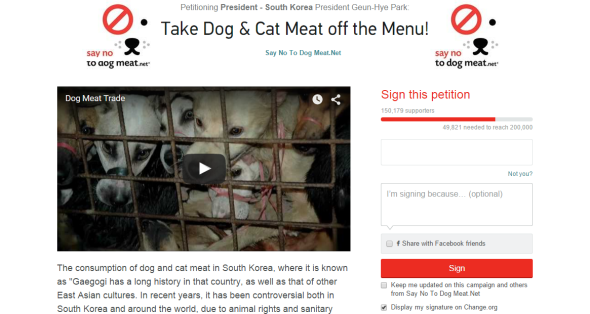
Image: Click the image above and help Say No To Dog Meat.Net end this torturous trade.
Statistics:
As explained in many past and present articles there remains no “factual” governmental statistics that can prove how many dogs and cats are killed “year round” within south Korea and, no real data to prove how many dogs and cats have been killed during the Bok Nal festival past and present. Without these statistics organisations such as Say No To Dog Meat must then rely on visual reports from the ground, interviews with traders and restaurant owners.
It would be deemed as grossly unprofessional for any organisation or individual to place any number into the domain without proof then ask for public donations. Instead bringing the trade and abuse into the limelight is considered more of a realist approach in the hope it will eventually bring the government to its feet to ban the trade or implement tough legislation to prosecute traders whom violate the laws already set out. Below are (estimates) and must not be taken as a proven or accurate statement.
The following data below derives from actual traders on the ground that have been interviewed during and after the Bok Nal festival. Included beneath is the average price of dogs and price for slaughter.
Estimated statistics on consumption and ownership:
- Trader 1 - Dog and cat meat restaurants number around 500-600 in Seoul alone.
- Trader 2 - During the last summer festival “estimates” of some 5 to 6 million dog meat dishes were sold during the twenty-one day event.
- Trader 3 - According to the Korean Kennel Foundation it’s believed that some 3.5 to 5.0 million dogs are kept as companion pets nationwide.
Estimated south Korean dog price and slaughter info:
- Gyeongdong Market in central Seoul - trader 1 states that the average price of slaughter/preparation/cooking and bagging is around 150,000 won.
- The current starting price for one dog comes in at 120,000 won and can exceed 190,000 won to 200,000 won stated trader 2.
- Separate pieces of dog meat are usually sold by weight, 5,000 won per geun (1.3 pounds/0.6 kilograms) explained trader 3.
- Another commonly served dish is sliced dog meat. A whole dog usually costs around 300,000 won in restaurants trader 4 stated.
- Gyeongseong Oriental Medicine Clinic, located near the market ask 350,000 won for a month’s worth of gaesoju; they charge half that if the customer provides the dog. Customers have to pay 20,000 won extra for slaughtering.
~ Source JoongAng Daily.
Image: Gyeongdong Market in central Seoul.
Changing Times:
While the trade in dog and cat meat continues times are in fact changing despite some organisations stating the trade is out of control to the point it cannot be controlled. Say No To Dog Meat, In Defense of Animals, Humane Society, Soi Dog and countless other organisations are all working towards providing dog meat traders with a more sustainable and healthier trade. Say No To Dog Meat’s mission for example is not just about “banning the trade”. One must remember this is indeed a trade and taking away people’s livelihoods despite the fact the western world sees such trades as cruel - will only increase unemployment, poverty and crime.
The board of directors have since founded, already devised a strong and trusted plan supported by over fifty thousand people and counting. Your donation can make a difference by providing traders and farmers with land and equipment to create a more attractive, non-abusive and a prosperous future ahead instead of using any donation to purchase dogs or cats from traders which only increases the circle of abuse.
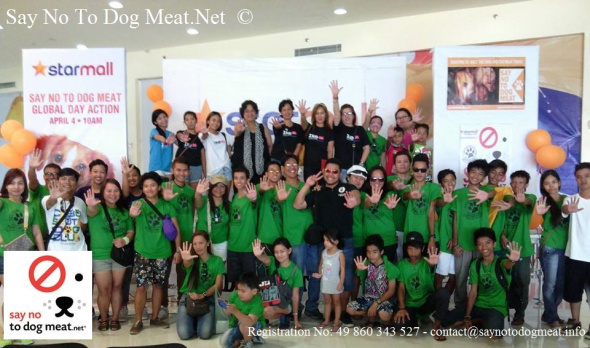
Image: Cebu, Philippines young activists aligned with the Say No To Dog Meat.Net organisation make their voice heard this past April 4th 2015 for S.N.T.D.M’s mass global anti pet meat trade demonstrations. The event hit Asia by storm supported by countless organisations and animal loving individuals. Say No To Dog Meat.Net rolled its youth education program out last year and has already seen a massive response from the young Asian community. Cebu children sent a message via Say No To Dog Meat to the pet meat-eating community - Please click the link above to view that message on Facebook. To join the Youth Club please contact: [email protected] today.
Creating fruit farms, vegetable farms, cotton farms, is one of many options already implemented by some organisations and the organisation Say No To Dog Meat. Establishment of pet rescue clinics has already been on the Say No To Dog Meat agenda of which removes dogs and cats from the streets, treating and, re-homing to trusted and caring families locally and internationally.
Many young people from all over Asia have already joined the Say No To Dog Meat mission and to date are lobbying with the organisation to bring this trade to an end while creating education and awareness to the many younger generations. Spreading the word among the young is pivotal and, has already proven to be a positive step for the Say No To Dog Meat organisation and mission objectives.
Say No To Dog Meat.Net:
Say No To Dog Meat.Net was established back in 2012 and founded in 2013. The organisation’s team are tackling traders within south Korea; Viet Nam; Cambodia; Thailand; Philippines; Nigeria; Ghana; Liberia and, Niger. Since founded Michele Brown, myself (Jose Depre), Donna Armes and our sister organisation have begun intensive lobbying of south Korean ministers, south Korean President, and the mayor of Seoul.
Say No To Dog Meat which is not related to the British charity (No To Dog Meat) also hosts petitions for each country they are actively working to end the trade within. South Korea being the most prominent of which the Aussie organisations petition holds over 150,159 signatures. The organisation requires at least a million signatures that will form part of the #Operationunite project bringing activists together to end this barbaric trade once and for all while offering dog and meat traders a way out of their traditional trade and, into a trade that is more profitable and all-round healthy.
Image: Stray dog looks on in sadness as friends are killed in front if him.
You can help Say No To Dog Meat.Net below:
- Sign the petition calling on the South Korean Government to take dog and cat meat of the menu.
- Get involved this September that will see many individuals lobbying for change this Embassy Day. South Korean embassy will be one of many embassies that the organisation will be pursuing for change.
- Encourage the younger generation to become involved. Say No To Dog Meat are currently seeking all young animal lovers to draw or paint their thoughts and, send in a small written message addressed to the South Korean government with an image of their hand with the words “I Say No To Dog Meat” on. (Watch the page for new updates)
- Host an awareness and education day this July in your city or begin planning for an adult/youth awareness and education day for Say No To Dog Meat’s #OperationUnite 2016 events.
- Donate. Say No To Dog Meat.Net cannot tackle the dog meat traders or farmers without your donation. (Please note: Say No To Dog Meat.Net “does not accept donations via cell phone devices”. All donations can be made via direct online transactions “safe and secure” or you can donate to the Say No To Dog Meat’s Environmental Companies F.A.A.W.S bank account on Pay Pal. Simply input this address - [email protected] and add the amount. You’ll receive like the SNTDM organisation will an electronic receipt, and you’ll be entered into the organisations free news letter subscription service.
For further information please contact the organisation hereto: [email protected]
Thank you for reading.
Dr Jose C. Depre
Chief Environmental Officer and CEO.
Endangered Species Monday: Pseudalopex fulvipes.
Endangered Species Monday - Pseudalopex fulvipes
In this Monday’s endangered species article we focus our attention on the species of fox commonly known as the Darwin fox. Identified by Dr William Charles Linnaeus Martin (1798 - 1864). Dr Martin was an English naturalist.William Charles Linnaeus Martin was the son of William Martin who had published early color books on the fossils of Derbyshire, and who named his son Linnaeus in honor of his interest in the classification of living things.
Listed as CRITICALLY ENDANGERED the species was scientifically identified as Pseudalopex fulvipes endemic to Chile, Los Lagos. Charles Darwin collected the very first evidence of this rather stunning species back in 1834 however was not the primary identifier despite the species name. Since 1989 the fox has been re-monitored to determine its current population sizes and future classification. I am somewhat skeptical that this species will survive into the next five years even with more in-depth wild analysis - the species in my own expert opinion is doomed.
One fox was observed and captured back in 1999 for data and breeding with a further two adults captured back in 2002 in Tepuhueico. That same year it was noted a local as killing a mother and her cubs which amassed to some four Darwin foxes witnessed dead and alive within the wild since revaluation of species began from 1989. Some evidence although (little documented) has confirmed “sightings” of Darwin foxes during the year of 2002 however, these are sketchy reports.
On mainland Chile, Jaime Jiménez has observed a small population since 1975 in Nahuelbuta National Park; this population was first reported to science in the early 1990s. It appears that Darwin’s Foxes are restricted to the park and the native forest surrounding the park. This park, only 68.3 km² in size, is a small habitat island of highland forest surrounded by degraded farmlands and plantations of exotic trees. This population is located about 600 km north of the island population and, to date, no other populations have been found in the remaining forest in between.
Darwin’s Fox was reported to be scarce and restricted to the southern end of Chiloé Island. The comparison of such older accounts (reporting the scarcity of Darwin’s fox), with recent repeated observations, conveys the impression that the Darwin’s Fox has increased in abundance, although this might simply be a sampling bias.
As explained even with a very, very small increase in sightings - populations are declining and sadly we may be reporting in the next year or two an (extinction in the wild) occurring if not a complete extinction overall. Should that happen we’ve lost the entire species for good.
Darwin foxes are said and known to be forest dwelling mammals which could be why environmental surveys are proving to be fruitless. Darwin foxes occur only in southern temperate rainforests. Recent research on Chiloé, based on trapping and telemetry data on a disturbance gradient, indicates that, in decreasing order, foxes use old-growth forest followed by secondary forest followed by pastures and openings. Although variable among individuals, about 70% of their home ranges comprised old-growth forest.
Protected under Chilean law since 1929 the Darwin fox are listed on Cites Appendix II (Convention on International Trade of Endangered Species wild flora and fauna). Conservation actions that are under way in the Nahuelbuta National Park are to increase species populations and establish overall protection within this range. Temuco zoo did hold one single species of which was believed to be held for protective captive breeding however the fox has since died back in 2000.
Threats
Although the species is protected in Nahuelbuta National Park, substantial mortality sources exist when foxes move to lower, unprotected private areas in search of milder conditions during the winter. Some foxes even breed in these areas. This is one of the reasons why it is recommended that this park be expanded to secure buffer areas for the foxes that use these unprotected ranges.
The presence of dogs in the park may be the greatest conservation threat in the form of potential vectors of disease or direct attack. There is a common practice to have unleashed dogs both on Chiloé and in Nahuelbuta; these have been caught within foxes’ ranges in the forest. Although dogs are prohibited in the national park, visitors are often allowed in with their dogs that are then let loose in the park.
There has been one documented account of a visitor’s dog attacking a female fox while she was nursing her two pups. In addition, local dogs from the surrounding farms are often brought in by their owners in search of their cattle or while gathering Araucaria seeds in the autumn. Park rangers even maintain dogs within the park, and the park administrator’s dog killed a guiña in the park. Being relatively naive towards people and their dogs is seen as non-adaptive behaviour in this species’ interactions with humans.
The island population appears to be relatively safe by being protected in Chiloé National Park. This 430 km² protected area encompasses most of the still untouched rainforest of the island. Although the park appears to have a sizable fox population, foxes also live in the surrounding areas, where substantial forest cover remains. These latter areas are vulnerable and continuously subjected to logging, forest fragmentation, and poaching by locals. In addition, being naive towards people places the foxes at risk when in contact with humans. If current relaxed attitudes continue in Nahuelbuta National Park, Chiloé National Park may be the only long-term safe area for the Darwin’s Fox.
No commercial use. However, captive animals have been kept illegally as pets on Chiloé Island.
Current estimates place the species population count at a mere 250 left within the wild.
Thank you for reading.
Please share and lets get this fox the protection it requires through education, awareness and funding.
Links for interest:
Adopt a Darwin Fox.
General Information.
Dr Jose C. Depre.
International Animal Rescue Foundation Africa.
International Animal Rescue Foundation Africa.
Donate to Say No To Dog Meat today.
Say No To Dog Meat - Demonstration, Rescue and Rehabilitation.
An organisation called Say No To Dog Meat.Net are holding an event on the 4th April 2015 at 10:00 am internationally. The event that’s been in the planning since last year is to be held in many countries from London, Australia, Canada, America, Serbia, Indonesia, South Africa and more. For more information on Say No To Dog Meat’s global demonstration please click this >here< that will direct you to their Facebook page event forum.
Say No To Dog Meat was formed by three Chief Executive Officers that work within the environmental and animal rescue sector. The organisation has to date attracted hundreds of thousands of people worldwide, readers and supporters to their cause. Say No To Dog Meat is within the transition process of becoming an Australian registered charity, furthermore have recently purchased a run down derelict building within Viet Nam of which will be their main Asian pet medical rescue and rehabilitation clinic. Once dogs and cats are safe from the clutches of pet eaters, traders and snatchers they will be re-homed internationally to loving and caring adopters.
The rescue and rehabilitation clinic is incredibly important to the three Chief Executive Officers their volunteers and staff. Say No To Dog Meat’s rescue and rehab clinic will be one of few such rescues within Viet Nam that actively help to remove strays of the streets within Viet Nam that have no home thus removing dogs and cats from the snatchers clutches whom feed into the cruel and diseased pet meat trade.
B.A.R.C. IS ALSO MARCHING WITH Say No To Dog Meat in their Global March for dogs and cats in the meat trade; 10am Saturday April 4th, 2015. Will you be marching with them too, in your country? For more information email Say No To Dog Meat here at - [email protected] for a march location in your country.
While the Organisation is being heavily supported by its sister Environmental Organisation - International Animal Rescue Foundation Africa via media, press and private funding, funds are limited. Say No To Dog Meat need public support both financially and via its supporters through sharing articles, news and helping with organizing events and educational classes worldwide to help reduce the pet trade through honest youth and adult education. Not forgetting educating the public about meat food viruses and viruses as a whole that are passed on or mutate from live or dead animals and meat kept in unsanitary conditions. Some amazing media articles have already been released about Say No To Dog Meat such as here on Dogster and even while underfunded Say No To Dog Meat have already helped shut down a small dog meat market and rescued dogs from the meat trade - Read more here
A unique organisation:
Say No To Dog Meat are unique as their main ambition is not only to end the pet meat trade within Asia and Africa but also the cruel and barbaric bushmeat trade that poses a serious disease and health risk threat to humans and animals. The term bushmeat, also called wildmeat and game meat, refers to meat from non-domesticated mammals, reptiles, amphibians and birds hunted for food in tropical forests. Commercial harvesting and the trade of wildlife is considered a threat to biodiversity and human security. Should the bushmeat trade trade continue to be ignored we’ll see catastrophic declines of wildlife in areas of Africa and Asia of which extinctions are already occurring both locally and regionally of some exotic species.
Say No To Dog Meat also appeals to all tourists visiting Viet Nam to please refrain from making their jobs harder to ban the trade. Its commercials such as this seen below that only feed the trade.

Mission Statement:
Say No To Dog Meat’s founders have decades of experience fighting this inhumane industry and have worked hard to achieve unprecedented access into areas of the trade not readily accessible to most outsiders. The organisations investigative work allows them to gather current, accurate and up-to-date information and images, evidence that is paramount in spreading global awareness and pressuring governmental organizations to enact enforceable animal welfare laws that protect companion animals. Ultimately, the organisations intention is to help create meaningful social and governmental change that results in a more humane world for dogs and cats and wildlife endangered by the bushmeat industry.
The organisation is determined to expose the cruel and ruthless activities within the dog and cat meat trade that are perpetrated by dog farmers, cat farmers, animal traffickers, butchers, vendors and dog and cat eating customers. “This is a billion dollar industry” Co-Founder Donna Armes stated, centered on live companion animals being tortured, killed and served as menu items. “It is a gruesome, violent trade that must be halted” stated Michelle Brown Director of Say No To Dog Meat and Co-Director for International Animal Rescue Foundation Africa.
Video below shows Viet Nam dog snatchers this October caught on CCTV - these dogs are most likely now dead - fed into a cruel and horrific pet meat industry, Say No To Dog Meat aims to stop this with new laws they are lobbying the Viet Nam government with on two separate petitions.
By tackling poverty in the nations of Africa where dog meat is being consumed, Say No To Dog Meat will work with aid organisations and companies, as well as welfare groups and communities. Founder Dr Jose Depre states “we are positive that by improving dietary needs and wiping out poverty in these small areas of Africa, we can wipe out the dog meat trade and black market, thus decreasing infectious diseases, rabies, H1N1, mutations and food poisoning”.
Further to this awareness and education, within the arable agricultural section, Say No To Dog Meat hope to improve the lives of families and increase employment, thus decreasing crime, however the CEO stated “this is going to be the toughest area both within the pet meat industry and black market trade we’ve ever tackled, these actions will bring a better welfare for all though and we’ll not stop marching forwards for animal welfare nor will anyone get within our way in conquering our goals set, we have a job to do and we’re going to do it”
INDONESIA IS MARCHING WITH Say No To Dog Meat in their Global March for dogs and cats in the meat trade; 10am Saturday April 4th, 2015. Will you be marching with them too? For more info email Say No To Dog Meat.Net @ [email protected] for a march location in your country. INDONESIAN SUPPORTERS: please join Animal Defenders Indonesia in the JAKARTA march.
Founders of Say No To Dog Meat aggressively opposes legislation that promotes or legalizes companion animal slaughter. They do not believe in the myth of “humane meat,” reject the concept of “humane slaughter” and strongly believe that dog and cat butchers cannot be relied upon to implement “humane” practices. The organisation founders also oppose dog farmers, cat farmers, slaughter unions, individual farmers or any persons being permitted to “farm” small numbers of dogs and/or cats for personal consumption. In addition, they are against dog and cat elixirs and tonics, despite (unproven) claims of their health benefits.
Through educational efforts, Say No To Dog Meat hopes to enlighten the global public about the miserable lives farmed companion animals face and how this trade impacts dogs and cats throughout the world. Education will also be provided for those wishing to adopt rescued animals from the live meat trade. These animals have been through varying degrees of trauma, so guidance is needed in ensuring adoptive families understand the process of restoring their new pet’s health, happiness and well-being. In addition, Say No To Dog Meat will provide education for people in dog and cat eating countries who wish to learn about responsible pet ownership and providing safe, long-term environments for dogs and cats as loved family members.
Please Donate:
Say No To Dog Meat has commenced fundraising, from which their efforts will include rehoming rescued dogs and cats from the live meat trade once the Viet Nam rescue and medical clinic has been established. “All fundraising will be conducted with full transparency and information pertaining to our monetary activities will be made readily available” stated Michelle Brown wildlife rescue specialist that resides in Australia. Donna Armes that resides now in Canada stated “participating in Say No To Dog Meat campaigns and signing our petitions supports our work furthermore to bring change for a better world for dogs and cats victimized by this trade”. “We invite you to join our fight to halt the live dog and cat meat trade and Say No To Dog Meat” stated the team of elite environmentalists and animal rescuers.
Say No To Dog Meat’s donation link is below. The link will direct you to their Facebook page from which you can also subscribe to their site for news and events plus lots more.

Please Make a donation TODAY and help Say No To Dog Meat - Thank you
The organisation now requires public funding to help establish their rescue and medical facility for dogs and cats in Viet Nam and hopefully over the borders too. Say No To Dog Meat requires funding for renovation, water, gas and electrical services to be reinstated, pet triage and surgical clinic, rehabilitation and special needs area, isolation clinic, cages and pet boxes, surgical equipment, bedding and blankets, medical supplies, food, and much more.
Once the rescue and rehabilitation clinic is fully operation specialist staff employed will then commence rescuing strays from the streets of Viet Nam of both sick dogs and cats and pets in need of a loving forever home. There’s more too. The organisation will also be holding rabies and vaccination clinics to help reduce disease and decrease rabies within the country and over the borders. Lastly while Say No To Dog Meat recognizes the honest work undertaken by groups of Asian activists that actively seek out pet meat traffickers - no animals that Say No To Dog Meat’s staff rescue will come from traffickers or butchers that require payment. “What’s the point in paying pet meat traffickers and marketeers just for them to purchase more dogs and cats from public funding” stated Jose Depre, “that is defeating the main objective and continues to feed the pet meat trade, were here to help and rescue pets not to continue a trade a circle of abuse”.
SAY NO TO DOG MEAT.NET is calling on the public to help them with their global march planned since January 2014. Demonstration event organizers and demonstrators are required eagerly to beef up numbers to make change happen. For more information you can contact Say No To Dog Meat hereto at [email protected]
Liam Williams - Publisher Environmental News and Media


